From structural backdrops that anchor planting schemes to living tapestries that purify the air, a garden wall can be far more than a boundary. Modern materials, eco-friendly twists, and clever space savers mean you can now turn almost any vertical surface into something beautiful and useful. Below you’ll find twenty fresh ideas—tested by designers, praised by gardeners, and easy to adapt to plots big or small—that show how a well-chosen garden wall can boost privacy, support wildlife, and add year-round drama. Ready to see which concept might transform your own patch? Let’s explore the possibilities one inspiring wall at a time.
1. Living Green Garden Wall
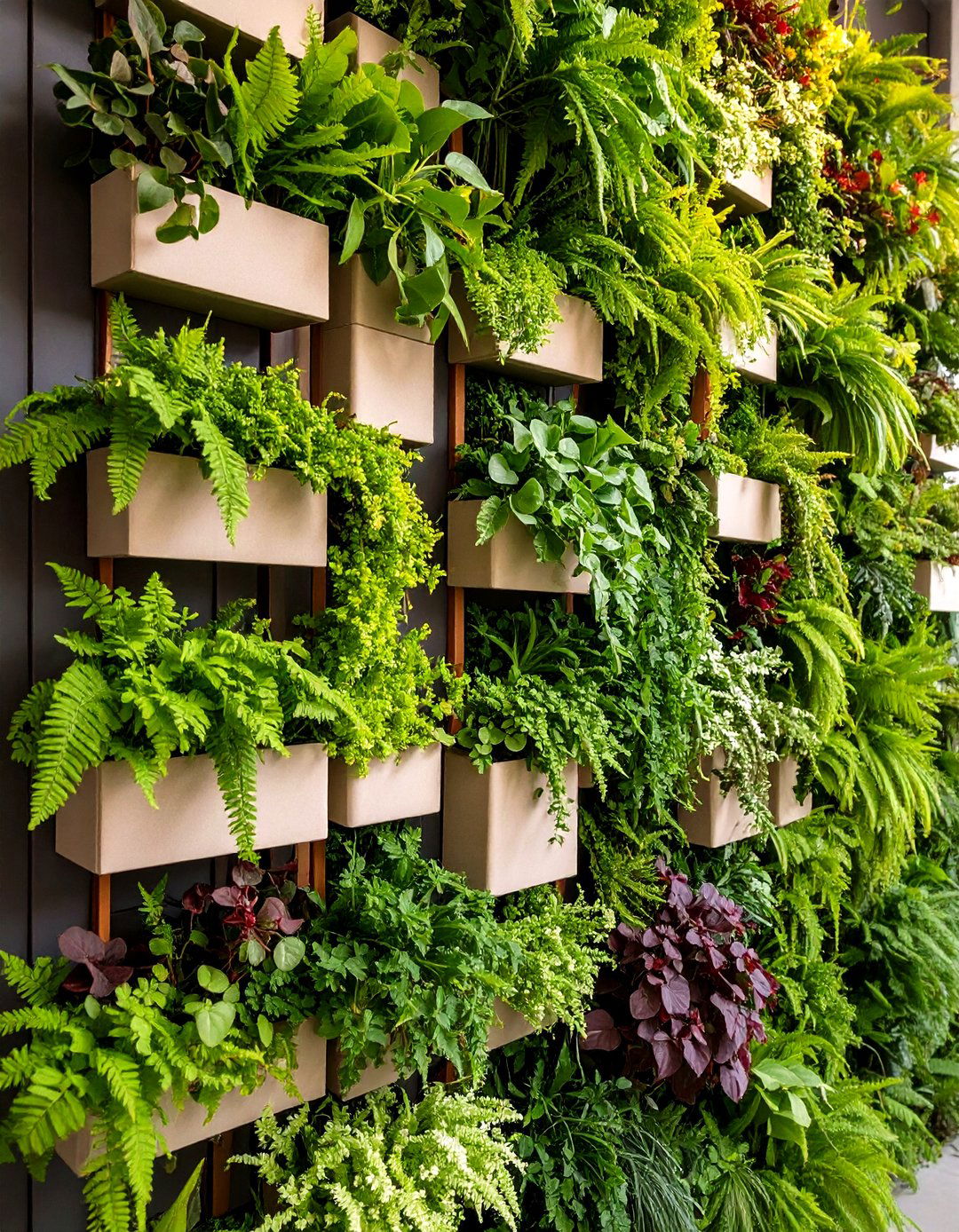
A living green garden wall instantly softens hard landscaping while super-charging biodiversity and air quality. Opt for modular felt pockets or recycled plastic panels fixed to a waterproof membrane, then pack them with contrasting foliage—ferns, heucheras, trailing oregano—for texture and year-round colour. Build in drip irrigation at the top of the frame so watering stays hands-off and economical, and feed monthly with diluted seaweed extract to keep plants lush. Site the wall where it receives bright but indirect light; scorching midday sun can desiccate the pocket edges. Even a single 1 m² panel yields more leaf surface for cooling and sound absorption than a small tree, making it ideal for urban courtyards.
2. Gabion Garden Wall with Raw Texture
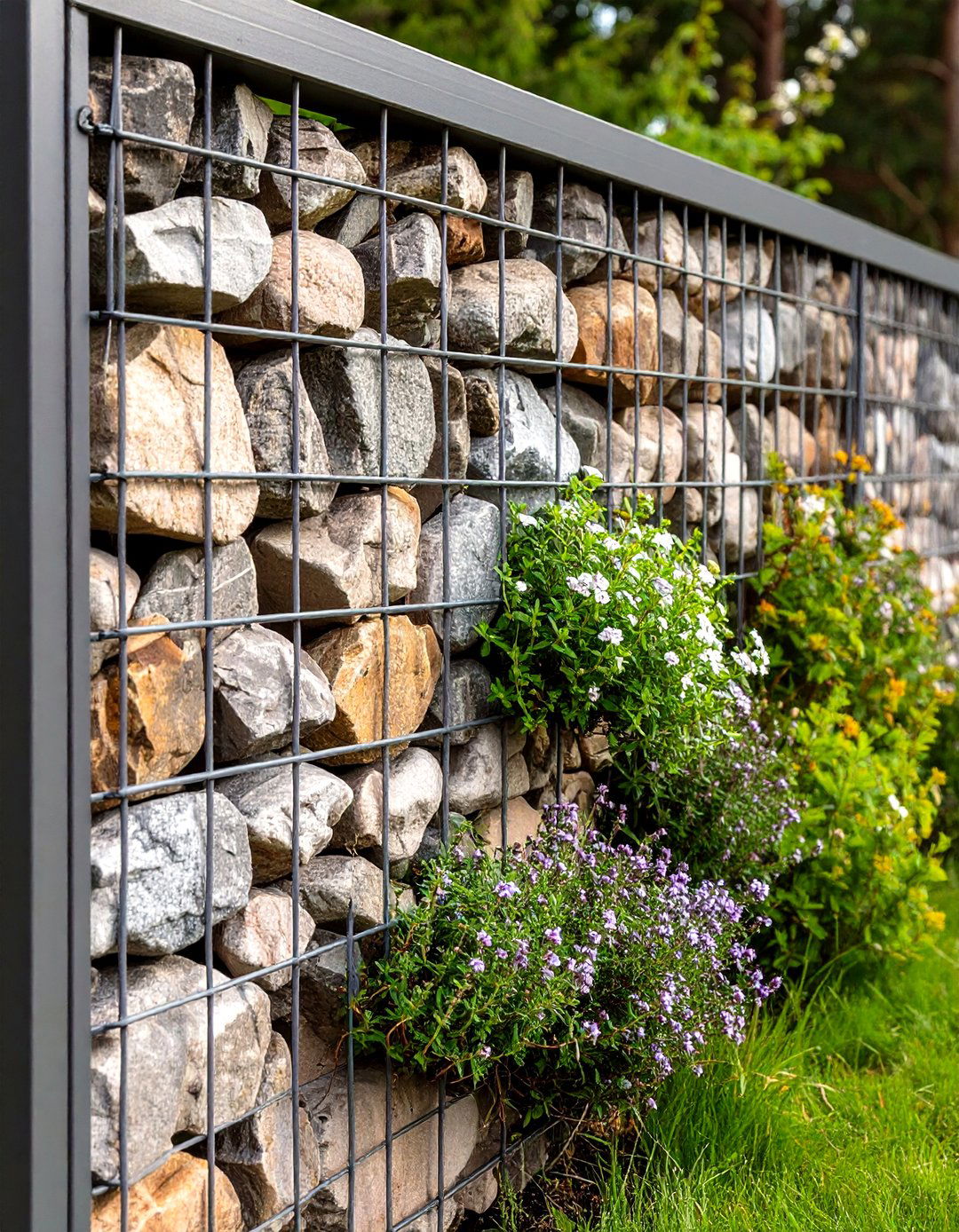
A gabion garden wall combines brutalist texture with eco credentials. Galvanised mesh cages are filled with whatever angular material you have to hand—local fieldstone, recycled bricks, even pruned timber rounds—locking them into a permeable mass that drains freely and will not heave in frost. Because the weight is self-supporting, foundations can be shallow, saving concrete. Designers at this year’s Chelsea Flower Show showcased thin two-tier gabions planted with alpine thyme in the gaps, proving the look can feel sculptural rather than industrial. When filled with regionally sourced stone the carbon footprint can be half that of equivalent blockwork, and the wall’s lifespan ranges from 30 to 75 years.
3. Dry Stone Garden Wall for Wildlife
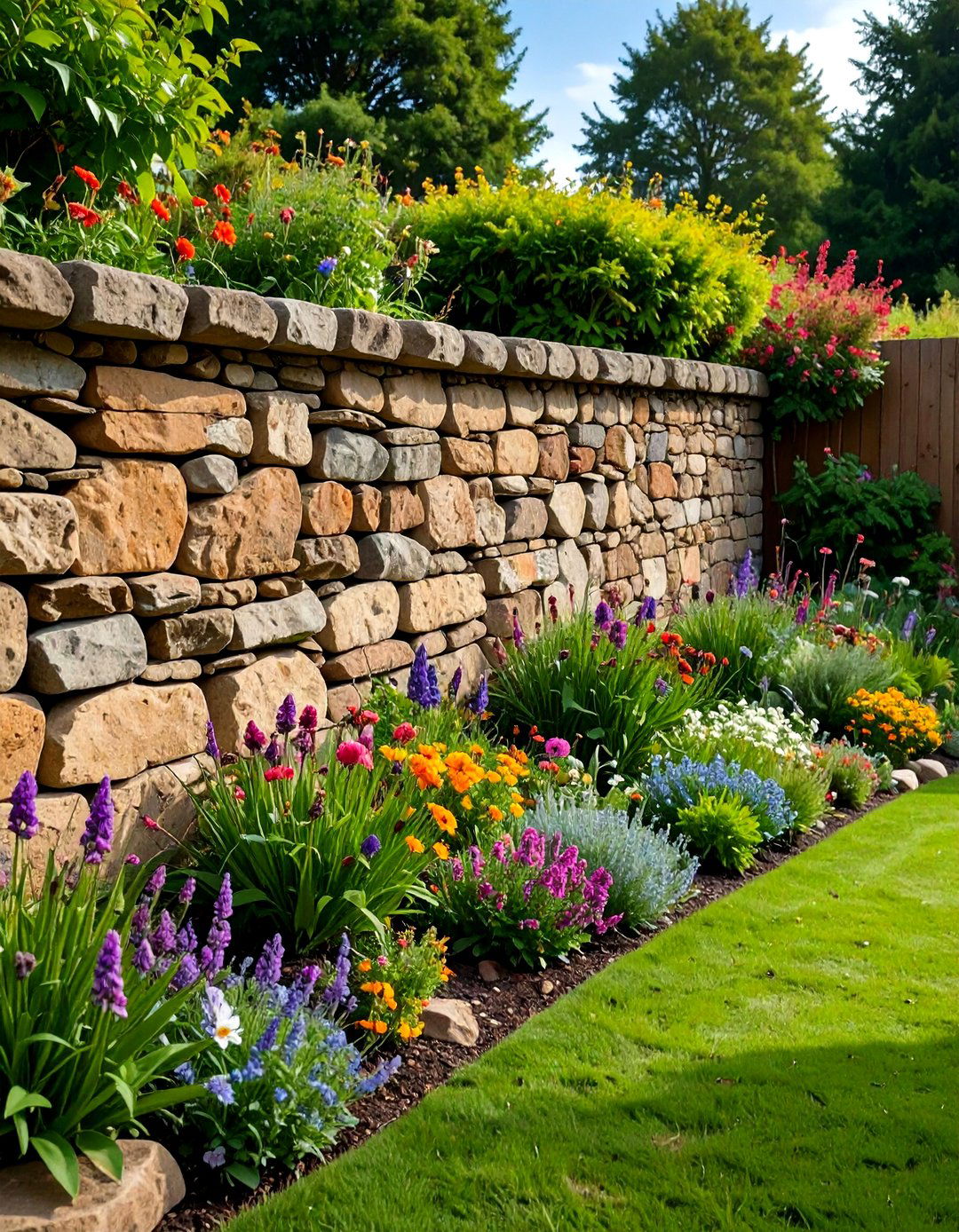
A traditional dry stone garden wall may seem old-fashioned, yet its loose stacking provides unmatched wildlife value. Narrow voids between un-mortared stones shelter solitary bees, lizards and overwintering ladybirds, while the structure’s natural drainage shrugs off hydrostatic pressure that can crack mortared walls. Skilled placement of interlocking “through” stones gives strength without concrete, and the wall subtly flexes during freeze-thaw cycles instead of crumbling. Expect a life expectancy of a century when built with dense local stone. Keep height under 1 m unless you hire an experienced waller, and top the wall with flat coping pieces to shed rain and discourage adventurous hens or toddlers from scrambling up.
4. Trellis Garden Wall for Climbers
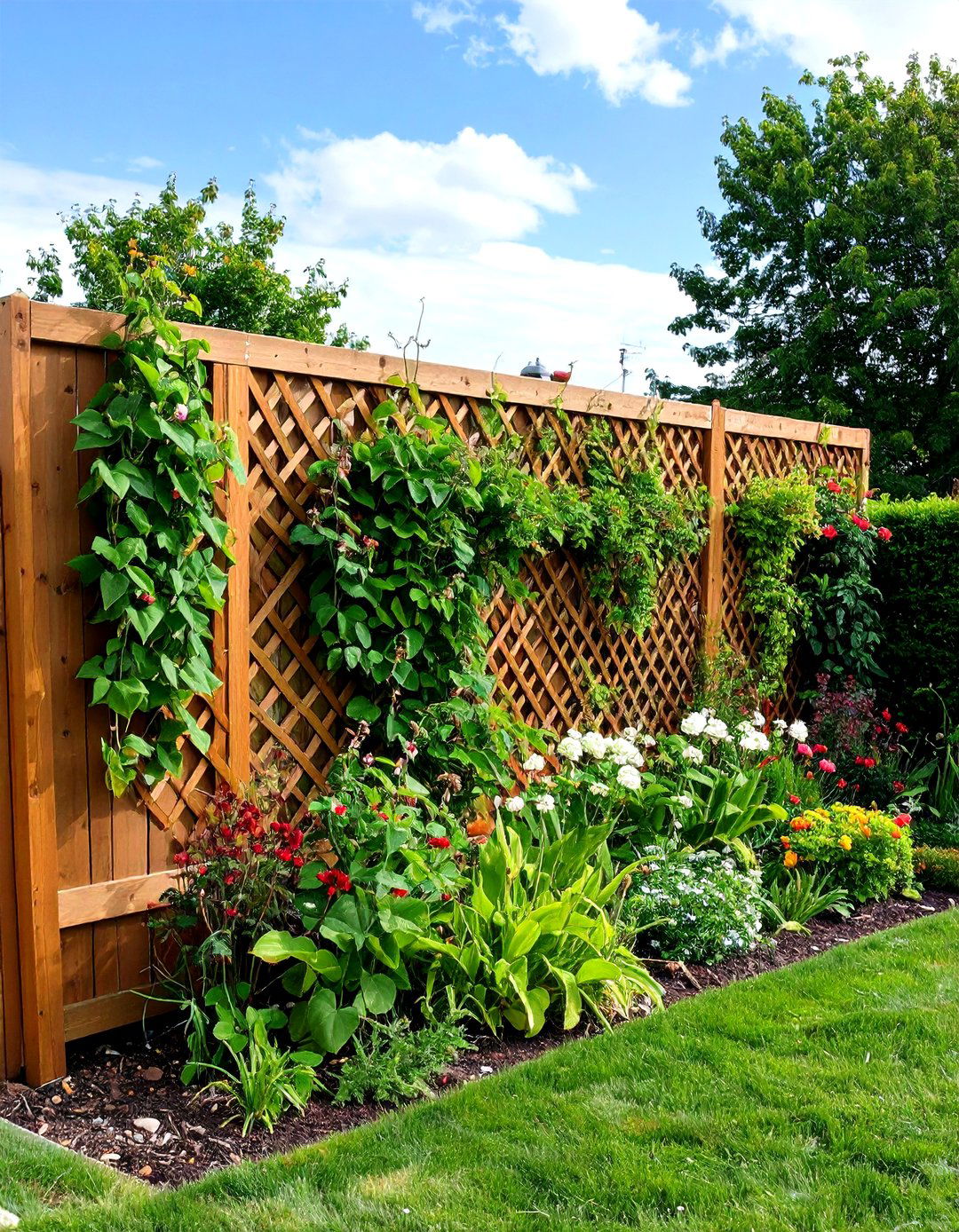
A lightweight trellis garden wall is the quickest way to vertical colour. Fix stainless-steel wire grids or cedar lattice 50 mm off an existing fence so air can circulate, then team it with flowering climbers that suit your sun exposure—sweet peas for scent, clematis for mid-summer bloom, or scarlet runner beans for edible decoration. Because root space stays at ground level, watering is as simple as drip-hosing the base. Training stems laterally along the grid encourages more flower spurs, while winter pruning keeps growth flush with the support, preserving pathway clearance. In narrow yards a wire trellis only adds centimetres of thickness yet can double your planting area.
5. Vertical Herb Garden Wall for Kitchen Freshness
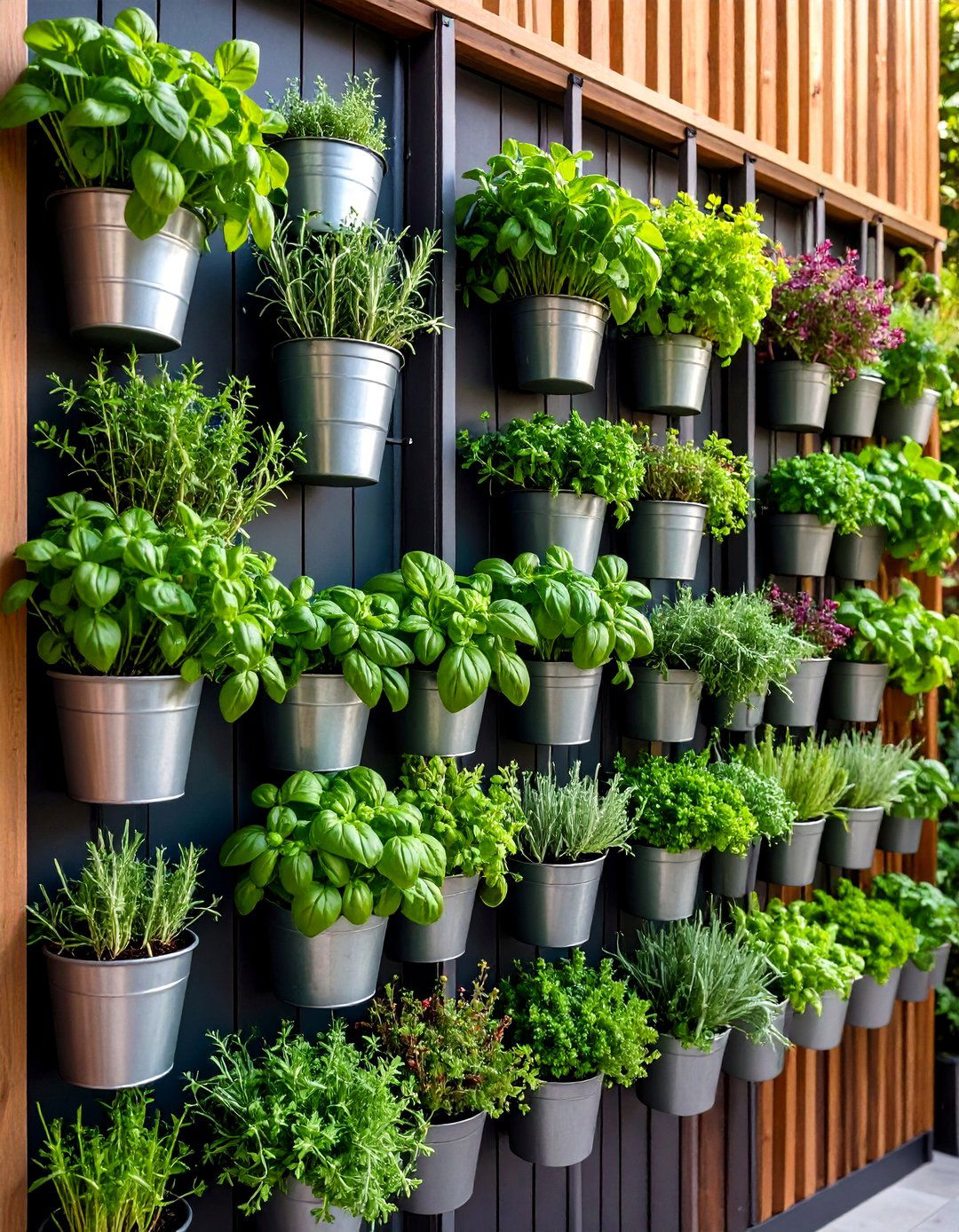
A vertical herb garden wall turns bare boundary panels into a fragrant pantry. Hang rows of hook-on metal pots or recycled rain gutters screwed to battens, ensuring each layer sits slightly forward of the one above for better light. Fill with free-draining compost enriched with slow-release organic granules and plant compact varieties—Greek basil, creeping rosemary, curly parsley. Snip little and often; frequent harvesting keeps herbs bushy and delays bolting. Because small containers dry quickly, line the back with capillary matting or connect pots with micro-irrigation emitters. The result is a living spice rack steps from the kitchen, perfect for renters who can unscrew the whole system in minutes.
6. Garden Wall with Built-In Seating

A garden wall with built-in seating solves three problems at once—retaining soil, creating a perch, and defining space. Construct a low (about 45 cm high) masonry or timber wall, then top it with a 5 cm-thick hardwood or composite bench board that overhangs slightly for comfort. If your plot slopes, step the wall to form terraced seating levels that follow the contour. Back-supporting cushions made from weather-resistant foam turn the perch into an outdoor reading nook, and lighting strips tucked beneath the seat edge provide subtle evening glow. This hybrid structure saves floor area normally lost to freestanding benches and visually anchors patios in larger lawns.
7. Mosaic Tile Garden Wall as Outdoor Art
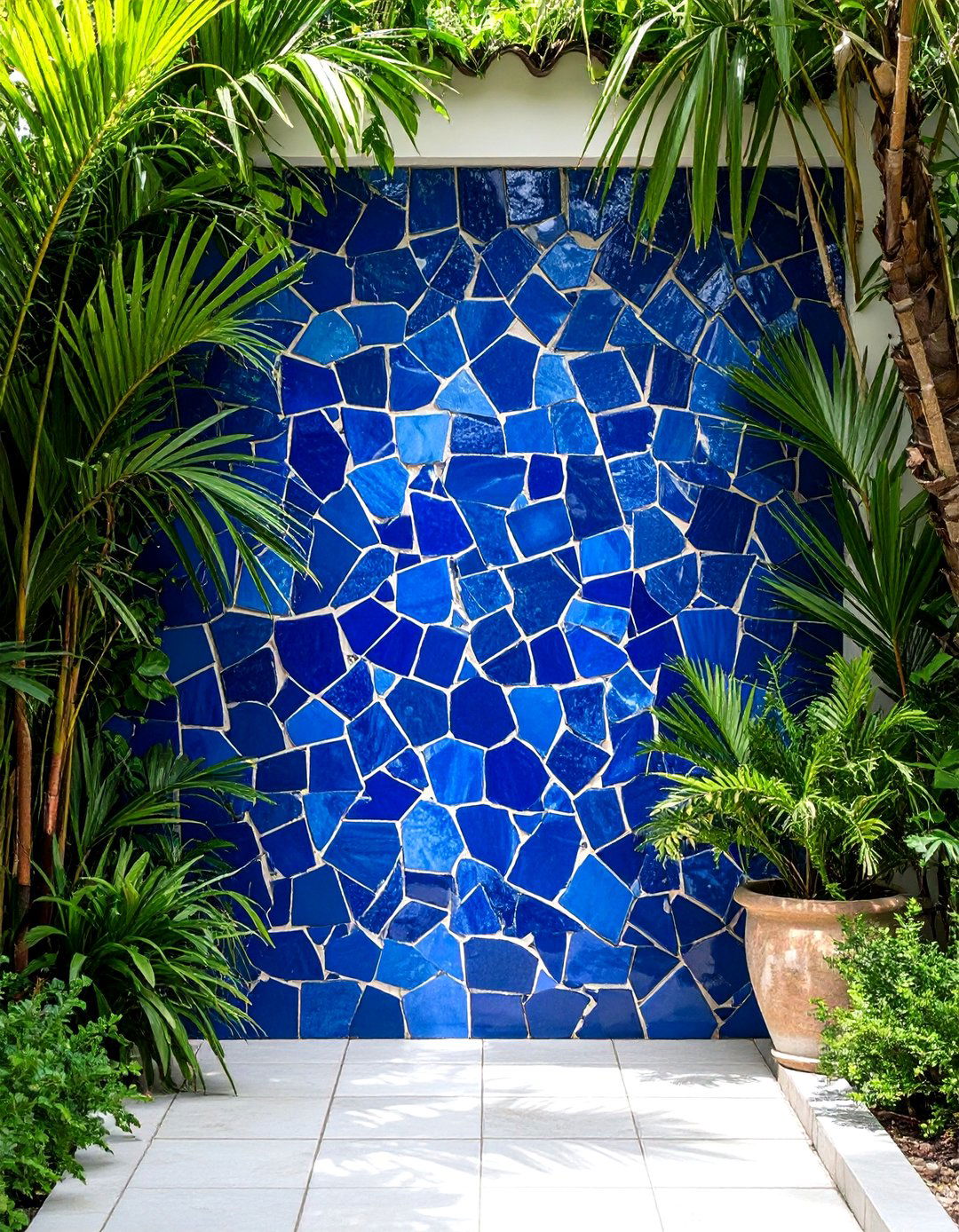
A mosaic tile garden wall transforms plain render into art. Start by skimming the wall with exterior-grade adhesive and press in shards of porcelain dinnerware, stone off-cuts or purpose-made glass tesserae in a chosen palette—Mediterranean blues for a cooling vibe or earth tones to echo plant foliage. Use contrasting grout to make patterns pop and seal with a penetrating sealer to prevent frost spalling. Because mosaics reflect dappled light, they create movement even when plants are dormant, and the glossy surface is easy to hose clean of algae. Limit motifs to one statement panel so the garden doesn’t feel busy; framing it with slim planting keeps the focus.
8. Corrugated Metal Garden Wall for Modern Edge
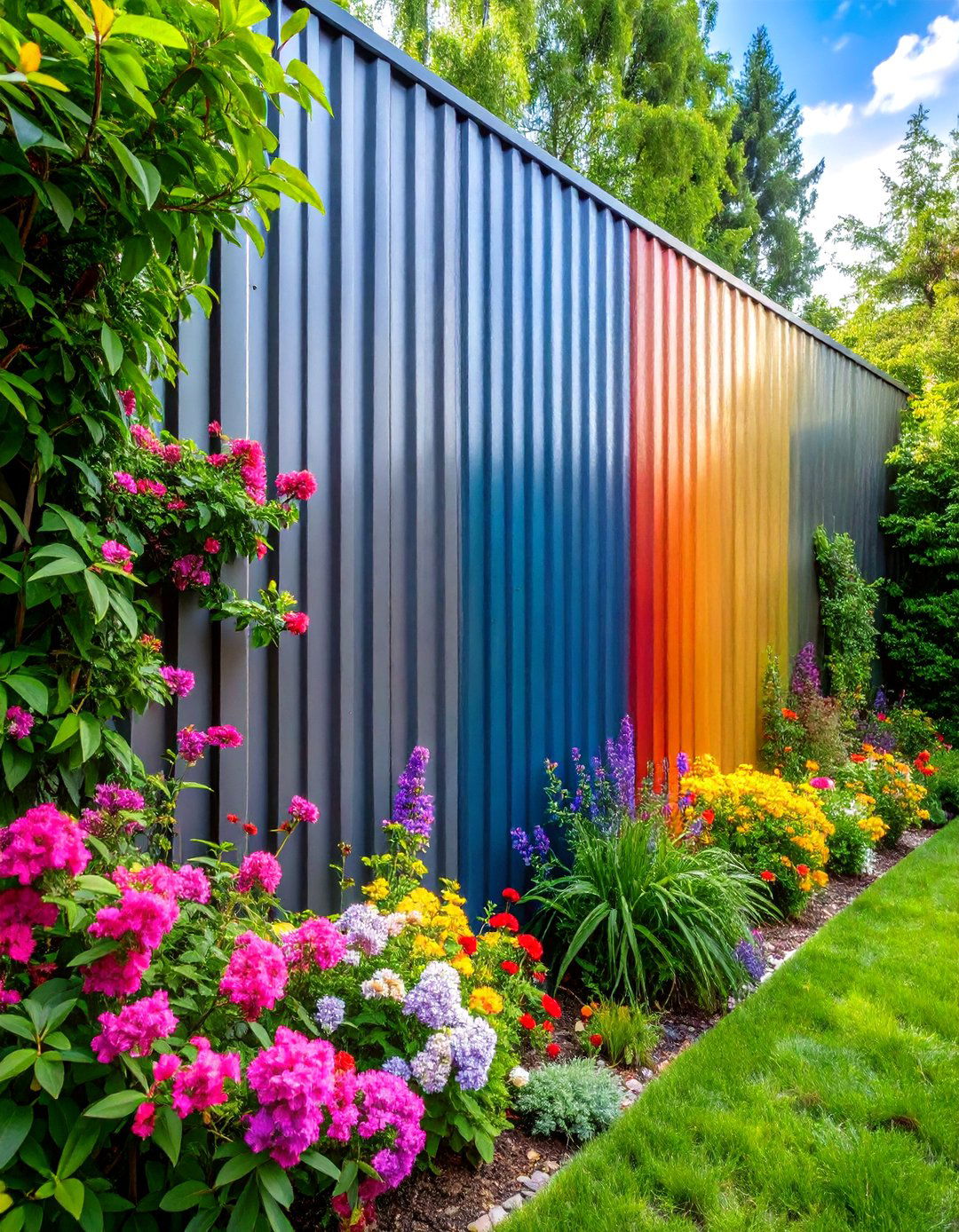
A corrugated metal garden wall lends modern edge and stands up to wild weather. Choose powder-coated steel sheets to resist rust or embrace Corten panels that weather to a protective orange patina. Fasten sheets horizontally for a low, elongated line, or vertically to make boundaries appear taller. Behind beds, the ripples act as acoustic baffles, muting street noise, while the reflective surface bounces late-day sun into planting in cool climates. Insulate the back with timber battens to avoid heat build-up scorching nearby foliage. A quick spray with biodegradable degreaser and a rinse keeps panels gleaming, and offcuts make matching raised planters for cohesion.
9. Bamboo Garden Wall for Natural Privacy
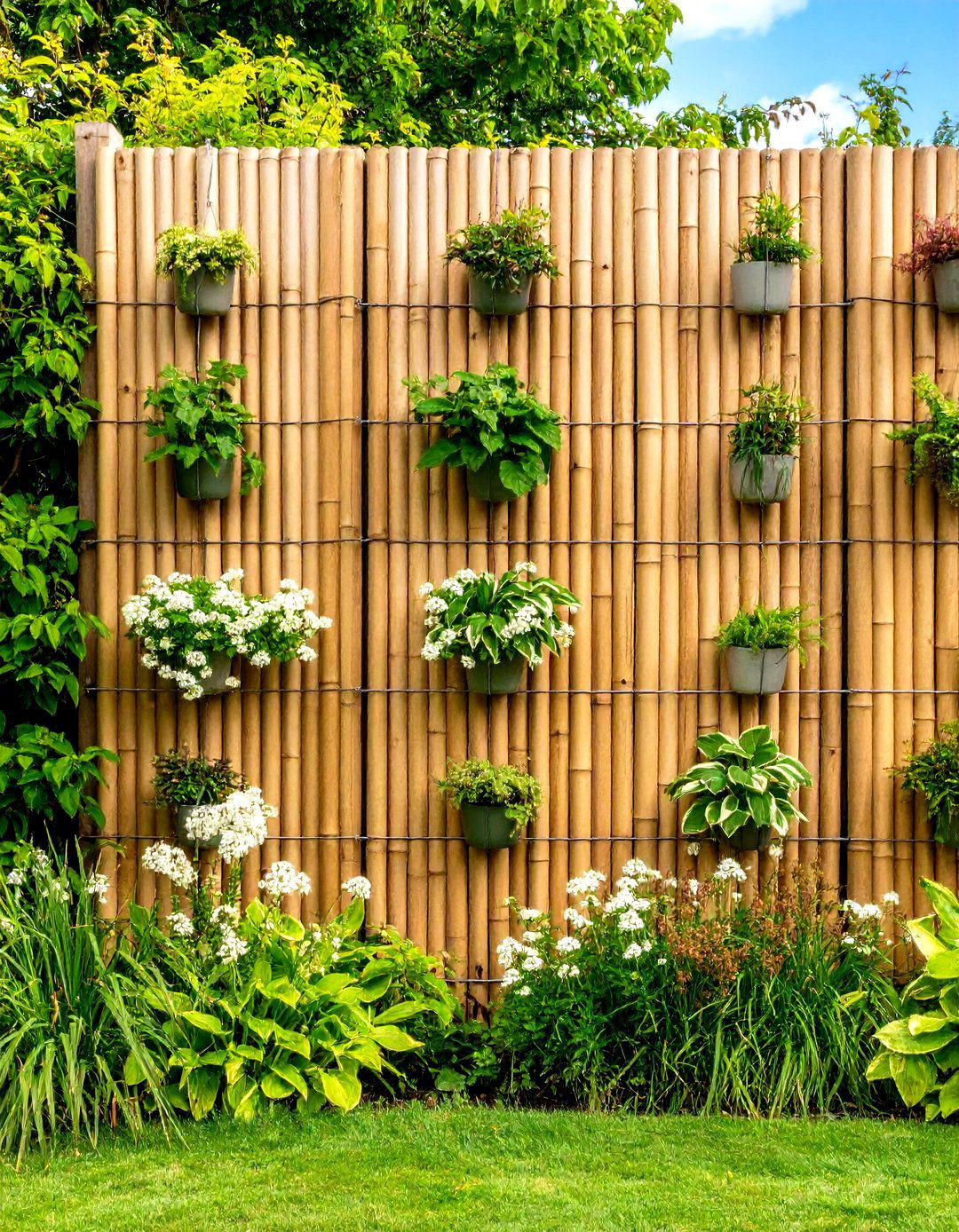
A bamboo garden wall offers instant seclusion with tropical flair. Rolled screens of cane lash easily to existing chain-link or timber posts; just add stainless-steel wires at 60 cm intervals to stop sagging. Natural silica in mature canes shrugs off rain, so most maintenance involves brushing on a UV-protective oil each spring to preserve warm honey tones. Because bamboo is lightweight, it’s ideal for roof terraces where solid masonry would be too heavy. Pair the screen with lush foliage like fatsia or hostas to hide the lower fixings, and tuck solar fairy lights between the poles for soft evening ambience that highlights the vertical rhythm.
10. Slatted Timber Screen Garden Wall
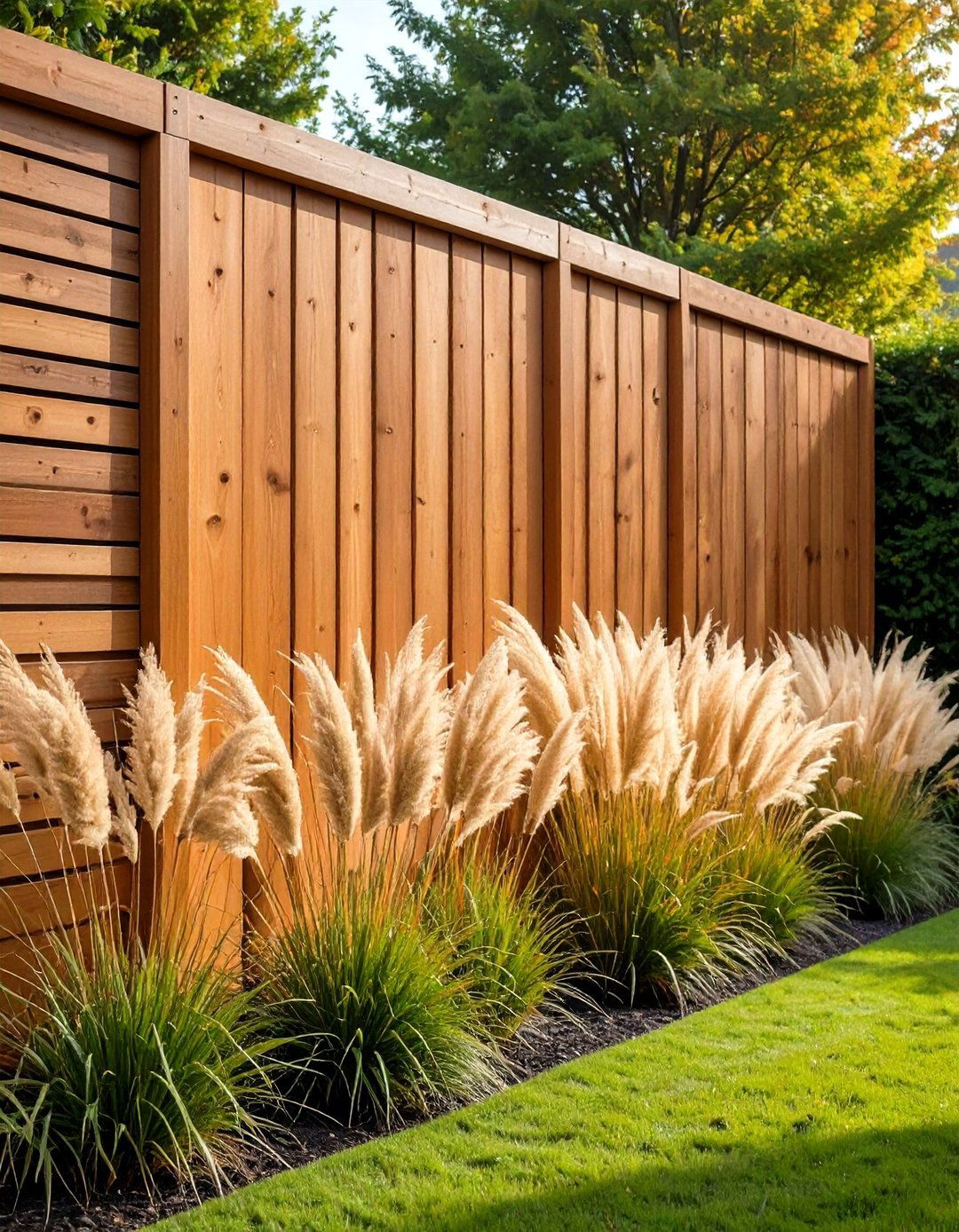
A slatted timber screen garden wall achieves privacy without blocking breeze. Fix 45 mm-wide cedar or thermally-modified pine battens with 5 mm gaps onto vertical posts; the slim shadow lines read crisp and contemporary. Offsetting alternate boards creates a gentle moiré that breaks up strong sunlight and casts attractive striped shadows over paving. Factory-finished boards need nothing more than occasional mild-soap washes, but if you prefer a silvered patina, leave cedar untreated and it will weather naturally. Script planting to complement the horizontals—upright grasses like Calamagrostis accentuate the rhythm—and use hidden post anchors so the base appears to float above gravel, emphasising lightness.
11. Mirrored Garden Wall for Spatial Illusion

A mirrored garden wall doubles perceived square footage in pocket plots. Secure toughened outdoor mirror panels to marine-ply backing and tilt them forward five degrees so rain runs off and birds recognise the reflection. Position opposite lush planting or a focal urn to amplify depth; avoid placing mirrors where they bounce harsh midday sun onto seating. Frame the edges with slim trellis to disguise seams and reduce the “fun-house” feel. In narrow side returns, even a 60 cm-wide strip can visually expand the corridor, drawing the eye along planting lines. Wipe monthly with diluted vinegar to keep reflections crisp and algae-free.
12. Water Feature Garden Wall for Serenity
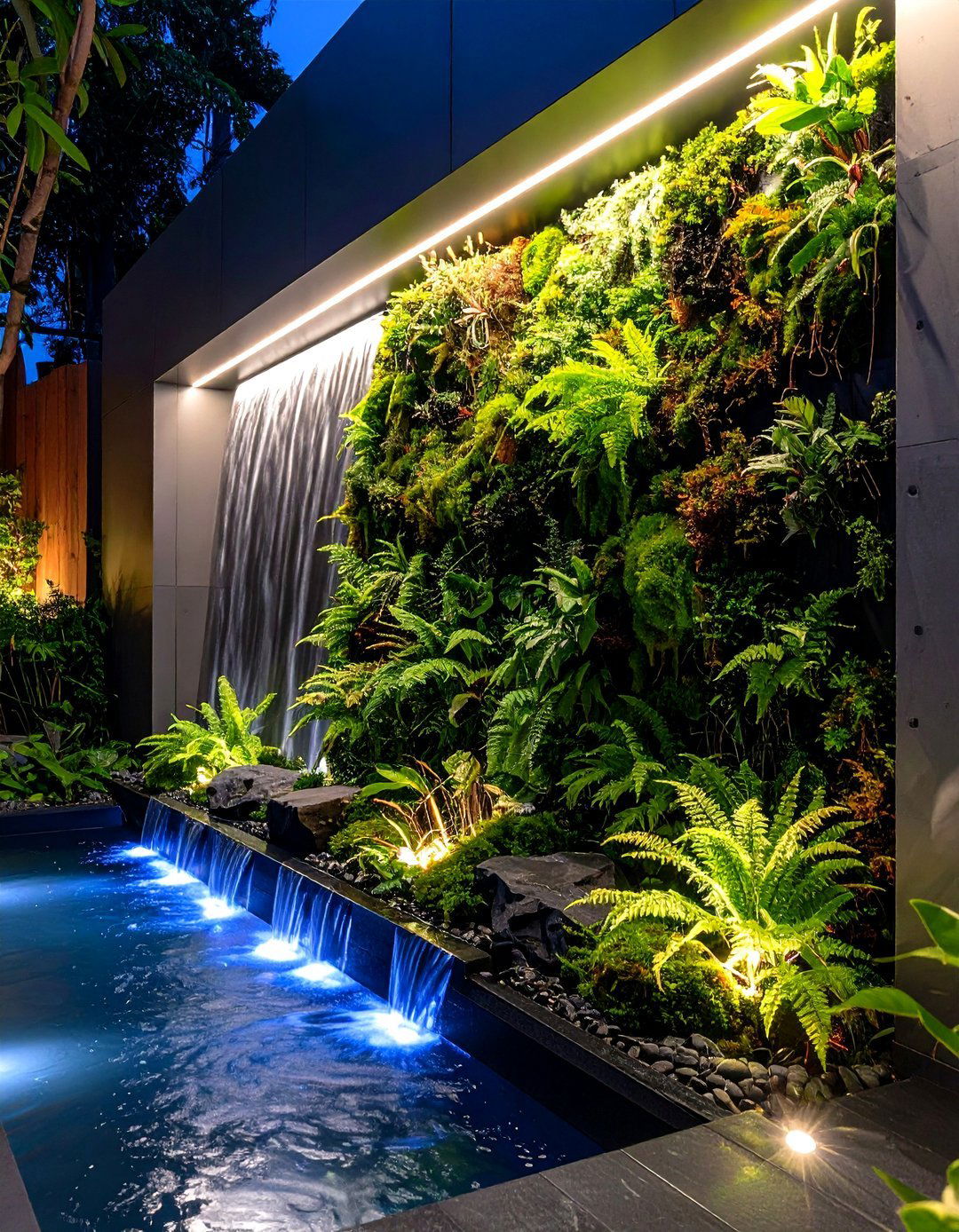
A water feature garden wall combines the tranquillity of moving water with vertical drama. Install a stainless or stone cascade panel fed by a hidden reservoir at the base; submersible pumps rated around 2,000 l h⁻¹ give a gentle sheet of water without splash. Mosses and ferns thrive in the humid microclimate, so plant crevices beside the spillway for a living fringe. Low-voltage LED uplights tucked behind the fall create shimmering evening reflections, masking traffic noise and doubling relaxation value. Ensure the wall is built on a waterproof concrete footing with membrane backing to protect adjacent structures, and include a removable mesh to keep autumn leaves from clogging the pump.
13. Painted Mural Garden Wall for Personal Flair
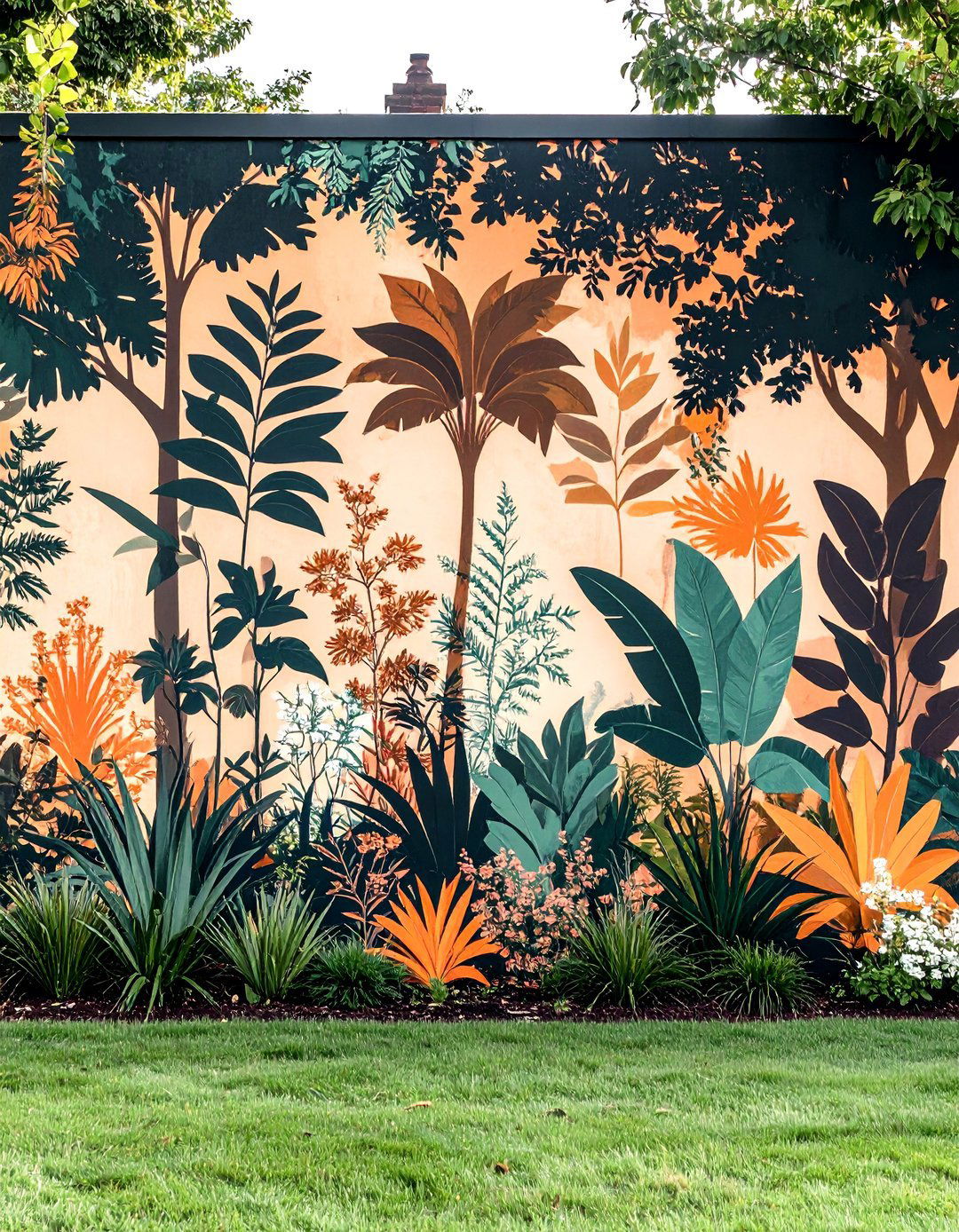
A painted mural garden wall lets you personalise the space with colour that survives the seasons. Use masonry primer followed by UV-stable exterior acrylics, sketching broad shapes first—waves, mountains, or oversized botanic silhouettes—before layering detail. A restrained palette of three shades prevents visual overload and makes future touch-ups straightforward. Murals disguise hairline cracks in old render and can highlight design lines; painting a horizontal horizon band, for example, makes a small garden feel wider. Protect the artwork with clear breathable varnish, and plant low grasses in front so the wall emerges like a backdrop on a theatre stage.
14. Garden Wall with Integrated Lighting
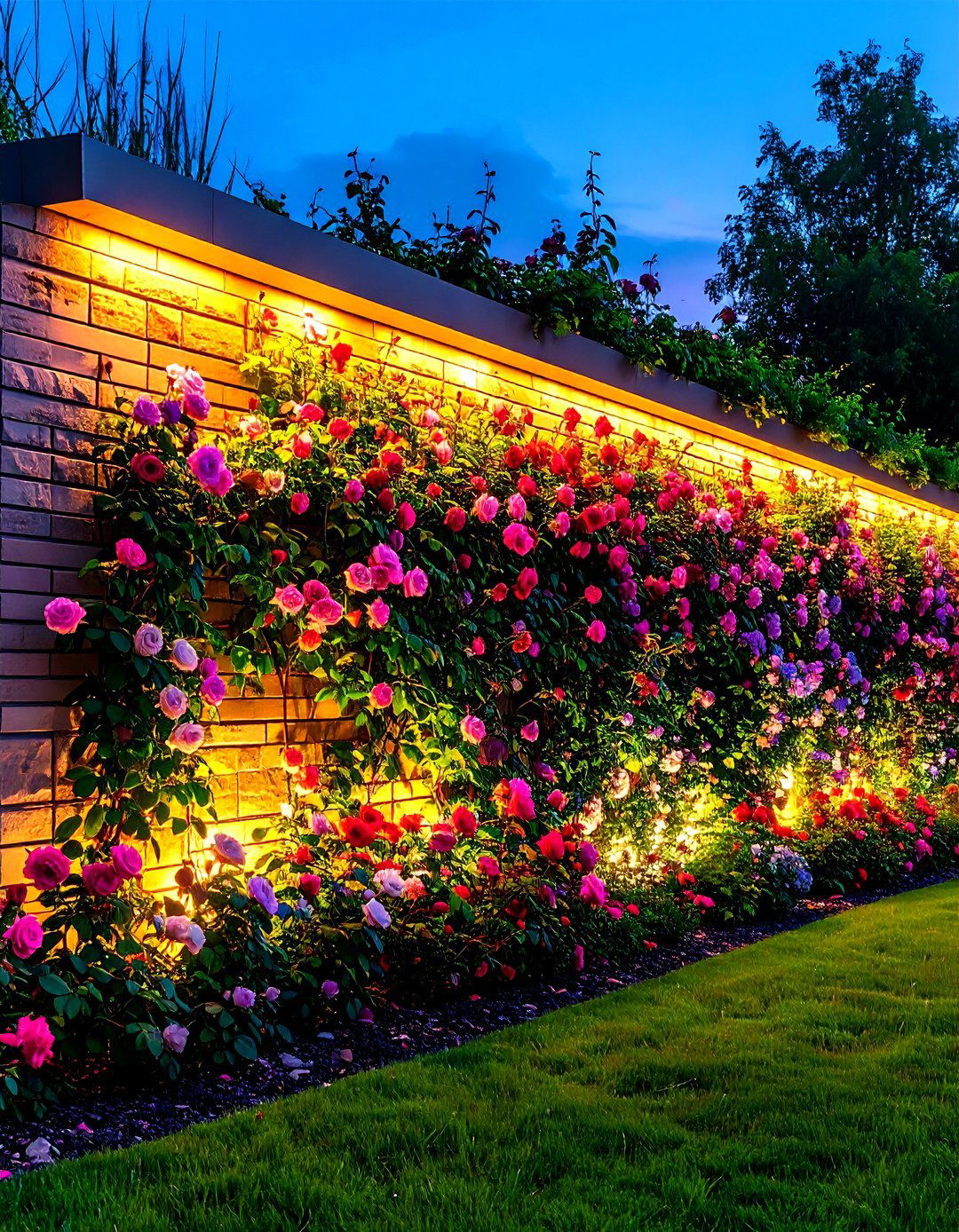
Garden wall lighting turns vertical surfaces into night-time artworks. Recess compact LED downlights between bricks or under coping stones to spill soft light over textured surfaces, or embed linear strip lights behind slatted screens for a subtle glow. Uplighters positioned at base level pick out climbing roses and sculptural shrubs, extending garden enjoyment after dusk and boosting security without glare. Choose warm 2,700 K LEDs to keep foliage colour natural and connect fittings to smart controllers for timed scenes. Proper cable conduit installed during wall construction avoids visible wiring and allows retrofitting of additional fixtures as planting evolves.
15. Espalier Fruit Tree Garden Wall
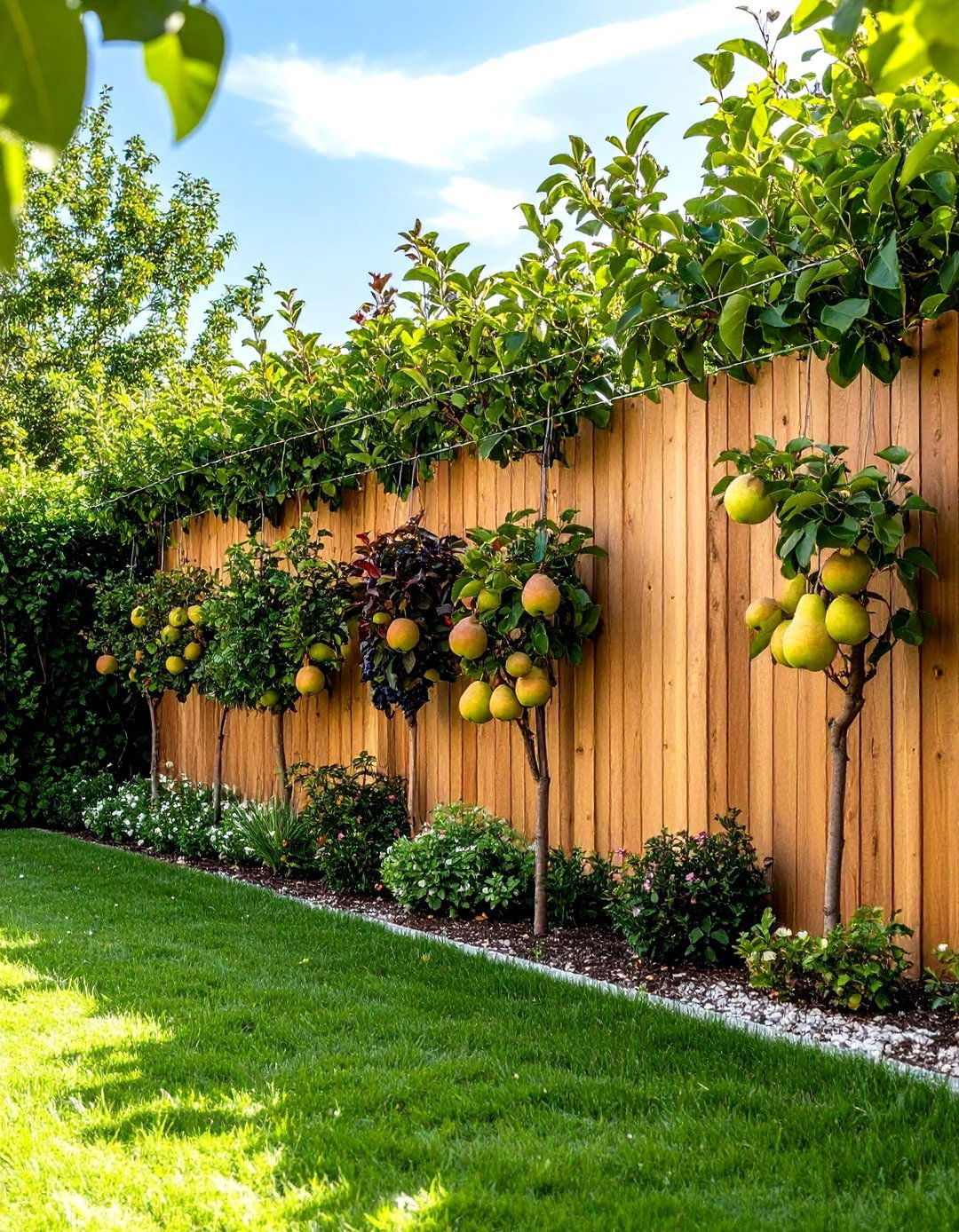
An espalier fruit tree garden wall delivers blossom, fruit and architectural form in the footprint of a fence. Attach galvanised eye bolts in vertical rows 40 cm apart, thread tensioned wires, then train flexible branches of apple, pear or fig horizontally along each tier. The masonry absorbs solar warmth, encouraging earlier ripening and protecting buds from late frosts. Because growth stays flat, pruning, spraying and harvesting are effortless, and you can grow several cultivars on one wall to extend the picking season. Mulch roots generously and water deeply through summer; restricted root runs make trees thirsty. Annual winter pruning maintains shape and fruiting spurs.
16. Recycled Pallet Garden Wall
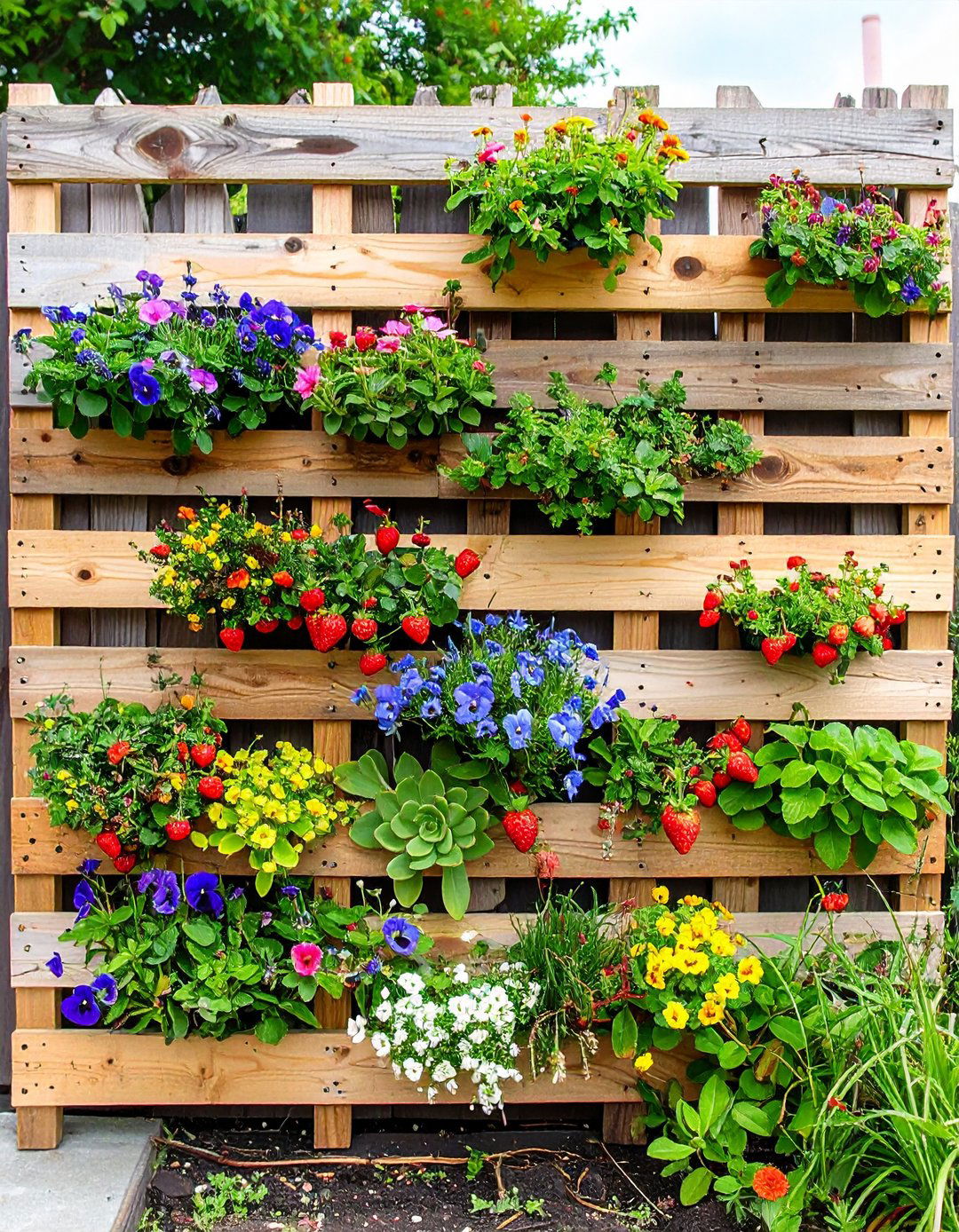
A recycled pallet garden wall proves upcycling can be stylish. Choose heat-treated pallets (marked HT) to avoid chemicals, sand lightly and line the back with doubled landscape fabric, then fill cavities with peat-free compost. Succulents, strawberries and trailing violas root happily between the slats, while the timber weather-silvers to a mellow grey. Attach drip irrigation tubing along the top plank and insert emitters at each plant pocket to offset quick drainage. Wall-mounting brackets rated for 50 kg prevent sagging when saturated. When seasons change, simply lay the pallet flat, replant, and stand it up again—maintenance that fits into a single afternoon.
17. Succulent Frame Garden Wall
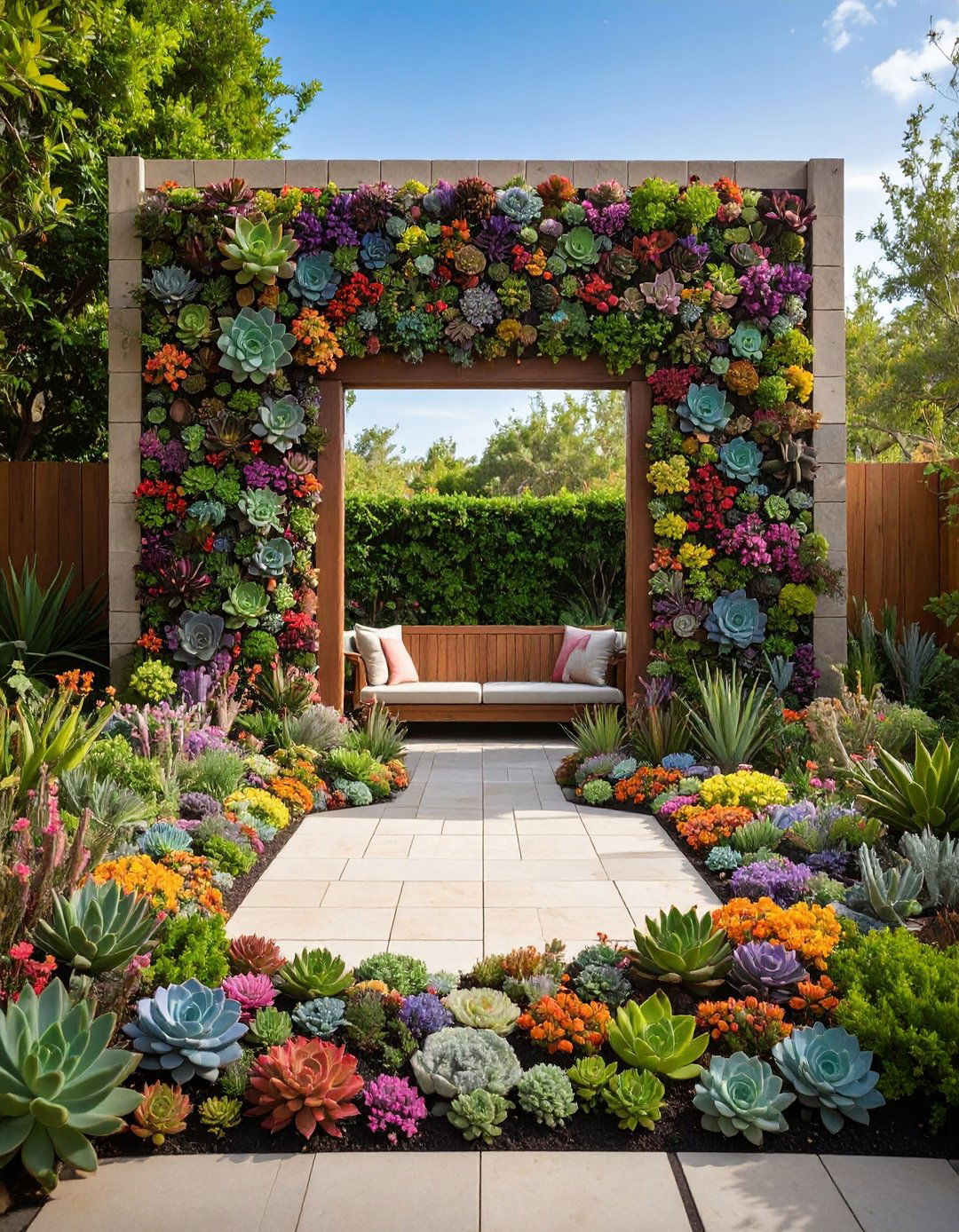
A succulent frame garden wall creates living artwork with minimal watering. Build a shallow shadow-box from rot-resistant cedar, back it with 12 mm plywood and staple galvanised mesh across the front. Pack the cavity with cactus mix and insert plug-sized echeveria, sedum and crassula through the mesh, arranging colours like a pixel mosaic. Leave the frame flat for four weeks so roots establish, then hang vertically in full sun. The drought-adapted plants need a light mist once a fortnight and virtually no feeding, making the piece perfect for holiday homes. Rotate frames seasonally to even out growth and keep the composition balanced.
18. Retaining Terraced Garden Wall

A retaining terraced garden wall makes steep yards usable. Step reinforced concrete or engineered timber walls in 60 cm rises, backfilling each terrace with free-draining gravel and perforated pipe to divert groundwater. Face the visible side with natural stone veneer or stained sleepers for character, and incorporate breaks every six metres for expansion joints. Cap wide terrace edges with flat pavers to create walkways for weeding and seating. Plant trailing rosemary or cascading Nepeta at the lip to soften hard lines. Building code often requires engineer sign-off above 1 m height, but the investment returns extra planting beds and a safer, child-friendly gradient.
19. Garden Wall with Shelving and Display Nooks
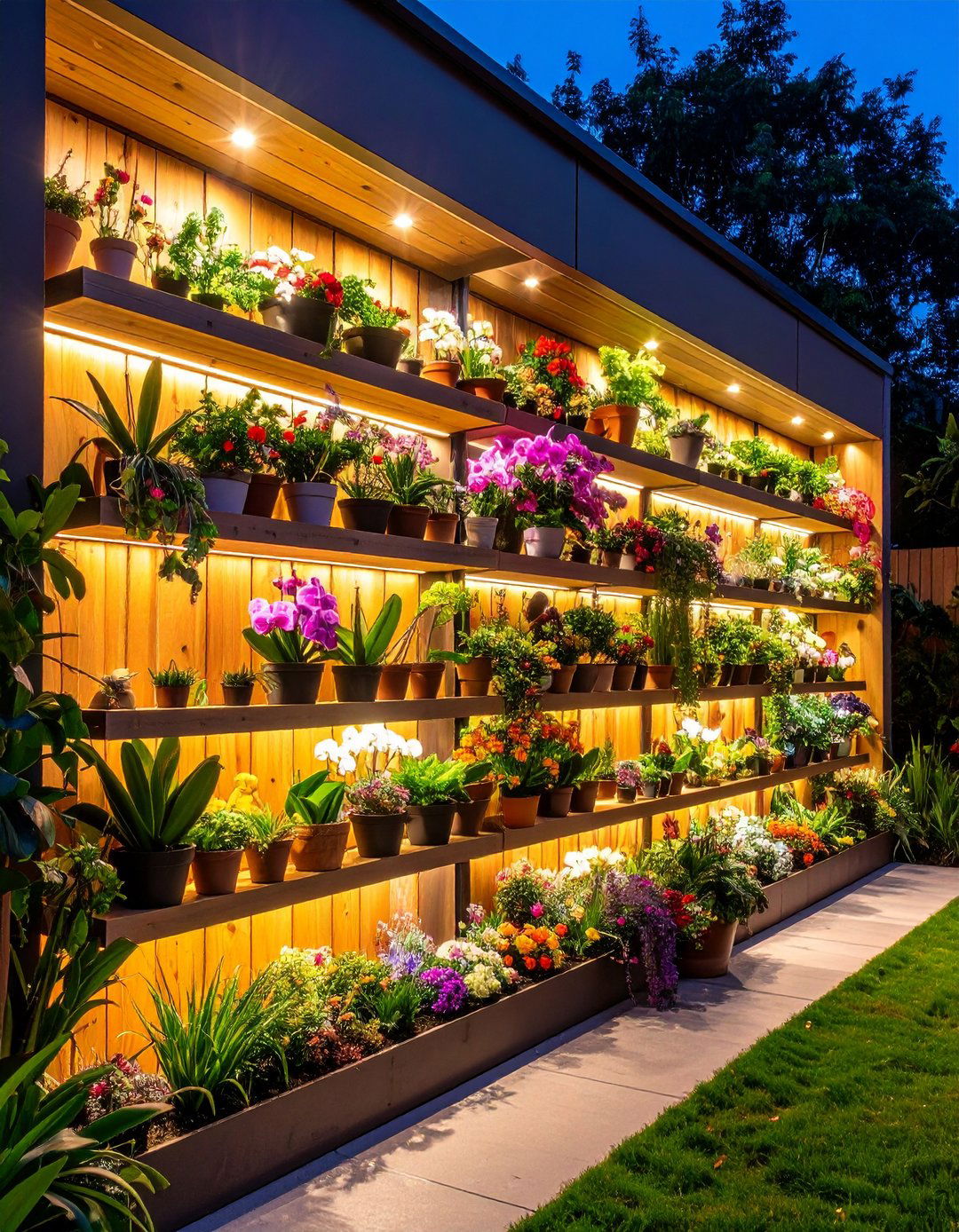
A garden wall fitted with shelving transforms a boundary into gallery space. Cast shallow breeze-block recesses or bolt powder-coated aluminium shelves between brick piers, then showcase potted orchids, lanterns or seasonal décor. Integrate low-voltage lighting inside alcoves for dramatic night displays, and use concealed drainage holes so pots don’t stain the surface. Shelving keeps prized plants at eye level—ideal for dwarf maples or bonsai—and frees floor area for dining. Because the wall already blocks wind, delicate specimens appreciate the microclimate and suffer fewer broken stems than on open benches. Anchor heavy items and check fixings annually, especially in freeze-thaw zones.
20. Mixed-Material Statement Garden Wall
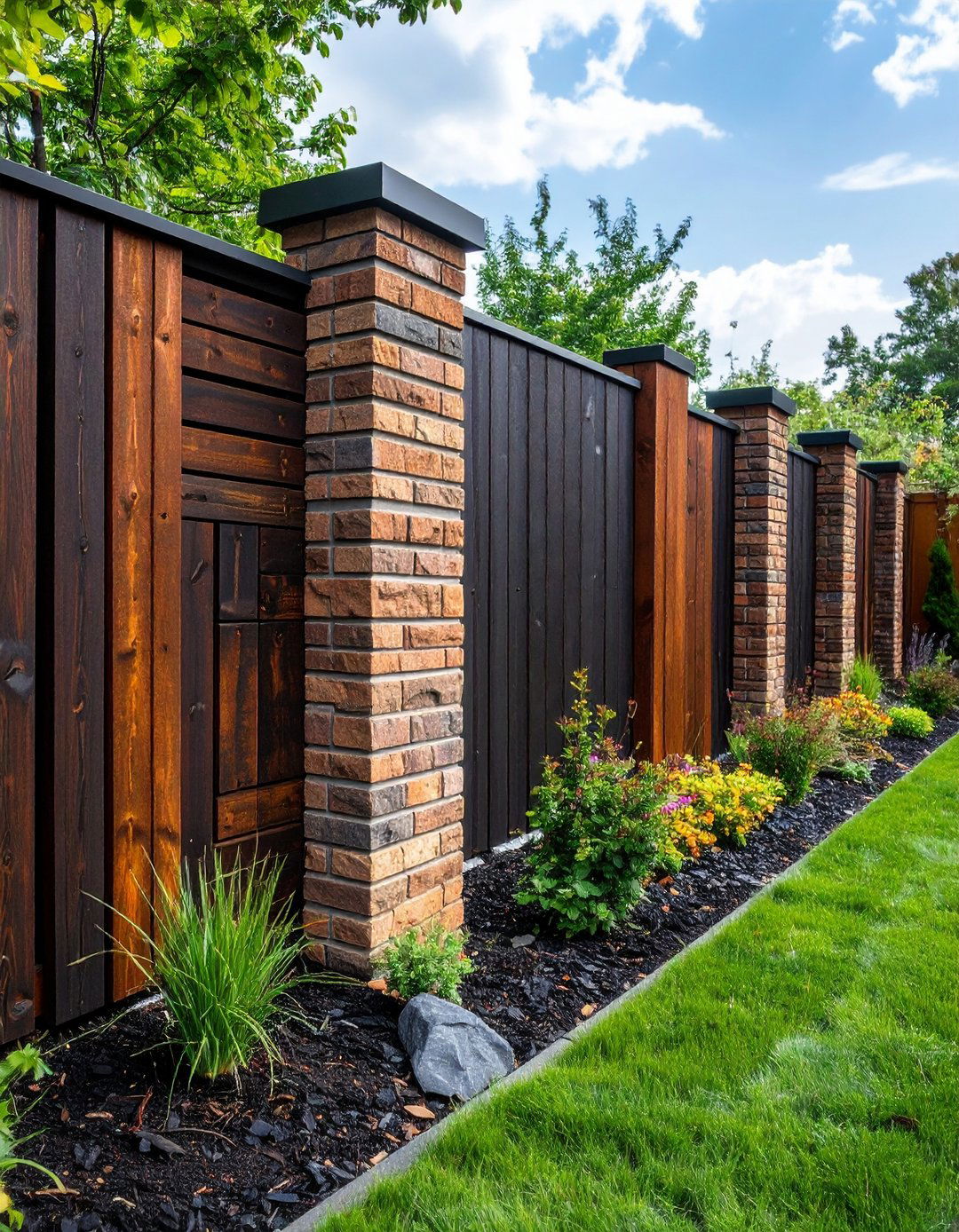
A mixed-material statement garden wall blends texture for big impact. Combine coursed brick pillars with infill panels of charred timber, Corten steel sheets or frosted glass, echoing tones found in paving or house cladding for cohesion. The variation breaks monotony and allows light where you need it: slatted timber over seating for dappled shade, solid brick behind the barbecue to block wind, translucent glass near the entrance to admit glow without compromising privacy. Modular construction lets you switch panels down the line—a future-proofing boon if tastes change. Keep the palette to three materials maximum so the wall feels curated rather than chaotic.
Conclusion:
Whether your garden craves greenery, art, privacy or structure, there’s a garden wall idea above to match the brief without devouring ground space. From low-tech dry stone stacks to high-tech illuminated living walls, each option offers its own blend of durability, wildlife value and aesthetic punch. Choose materials that suit your climate, integrate irrigation or lighting during the build, and treat the wall as a vertical stage where planting, water, colour or light can play. With thoughtful planning, the right garden wall won’t just enclose your plot—it will elevate it season after season.



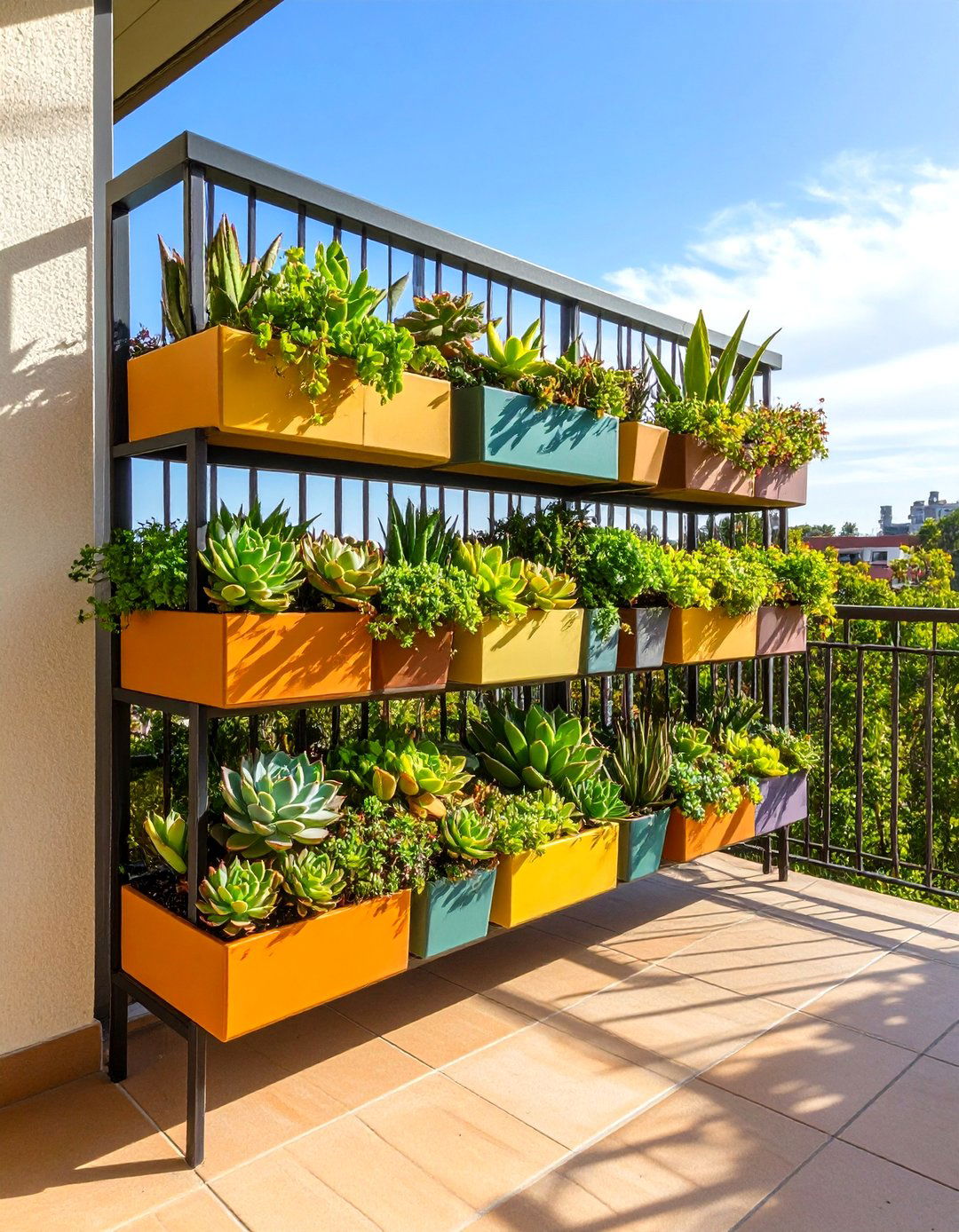

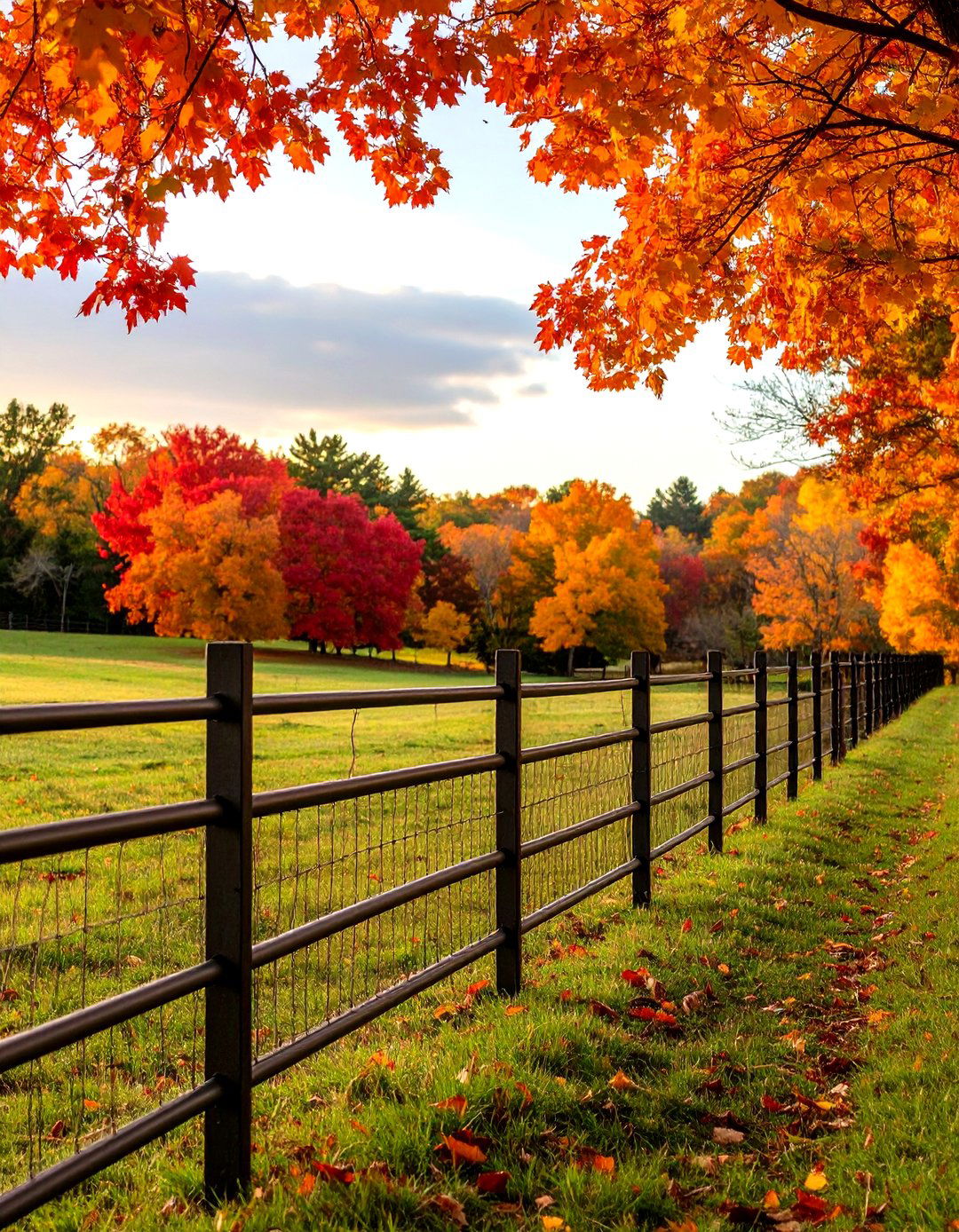

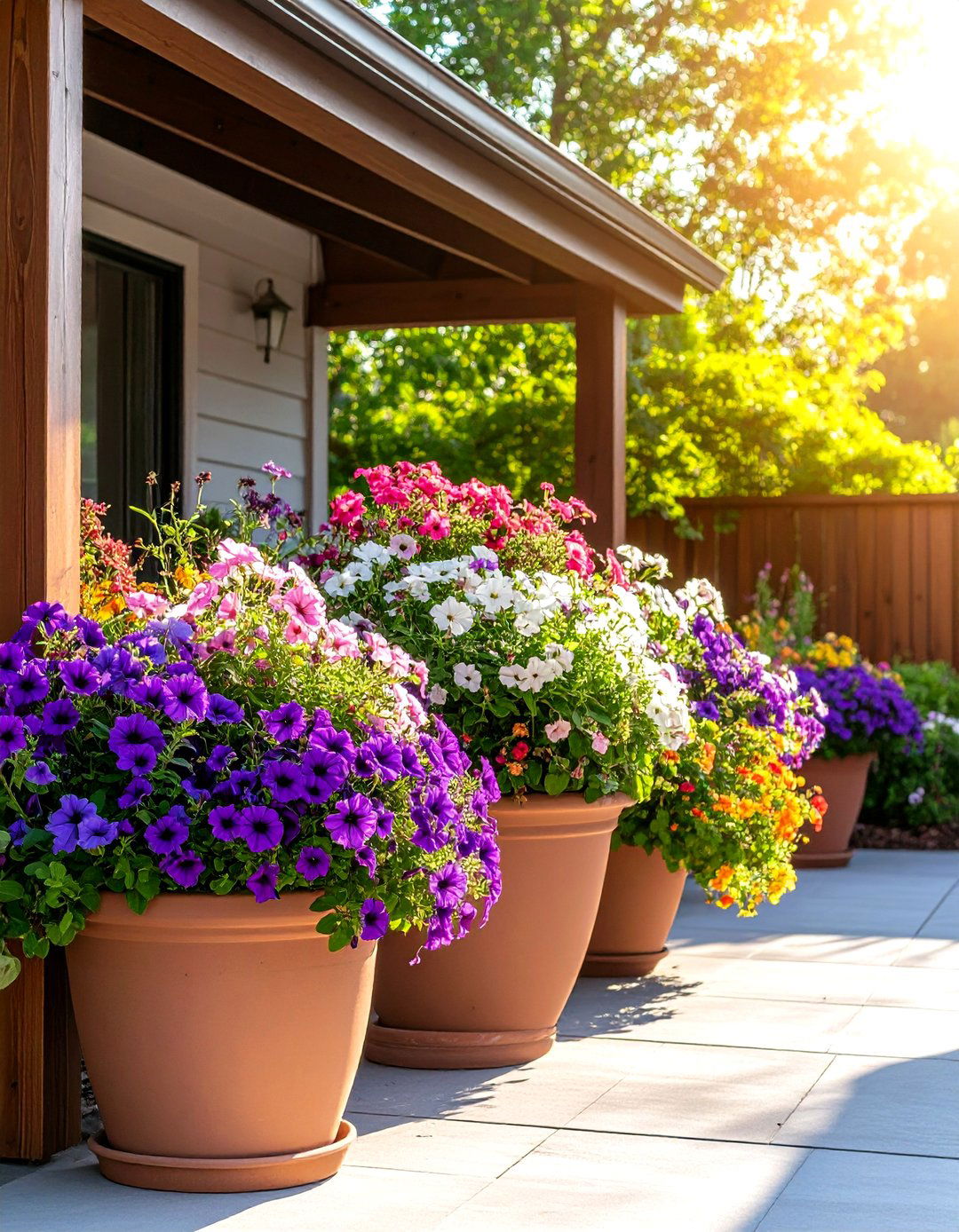


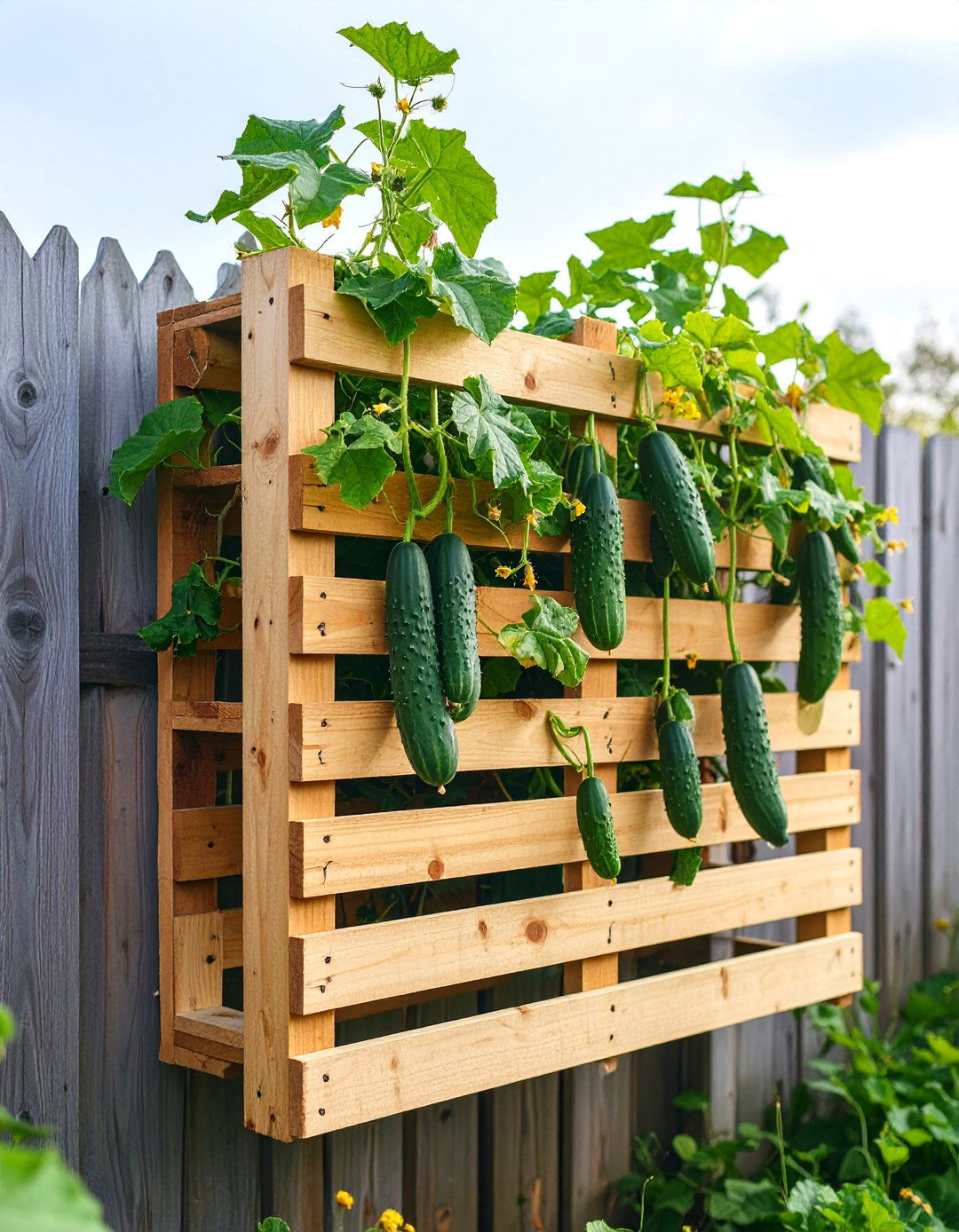
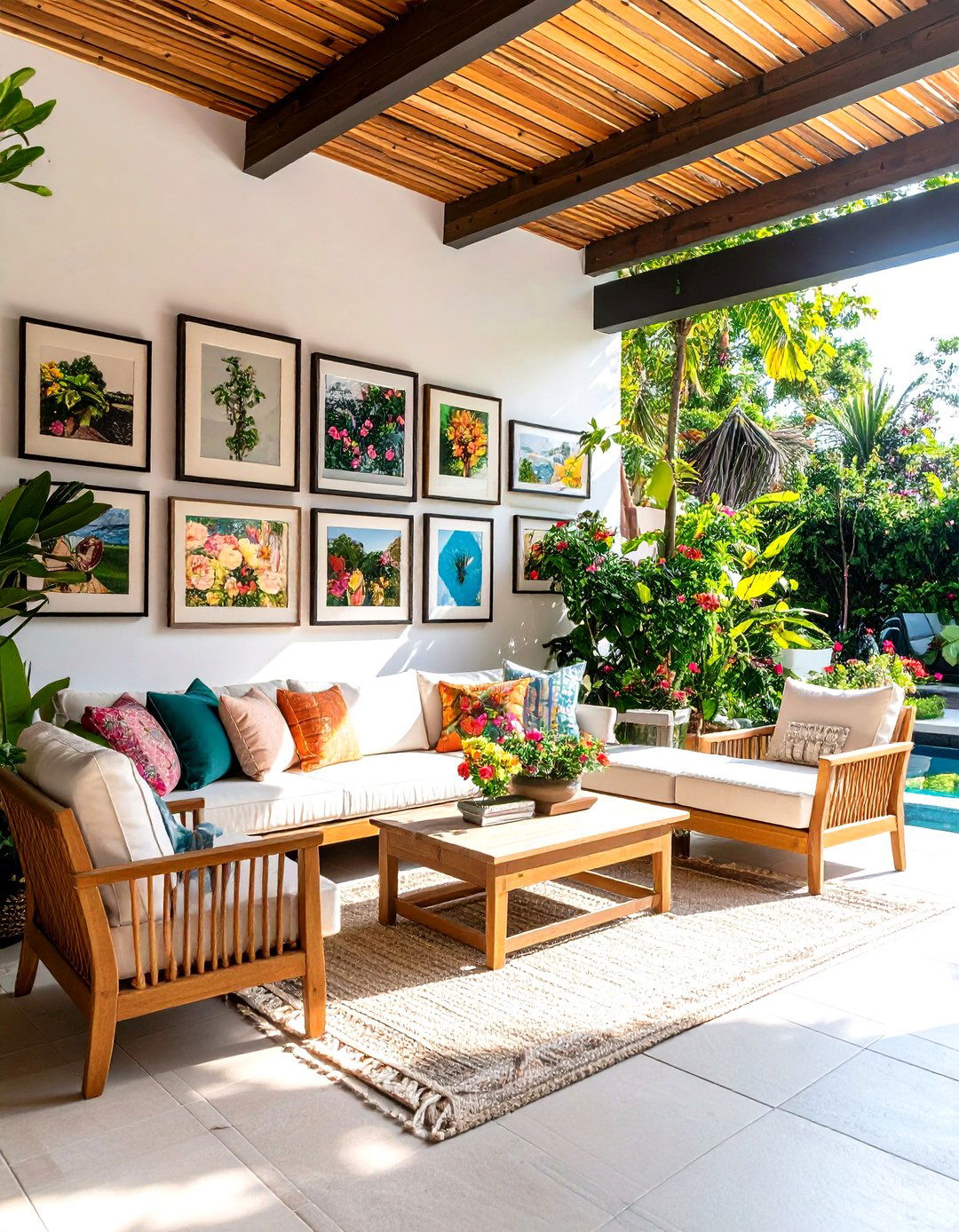
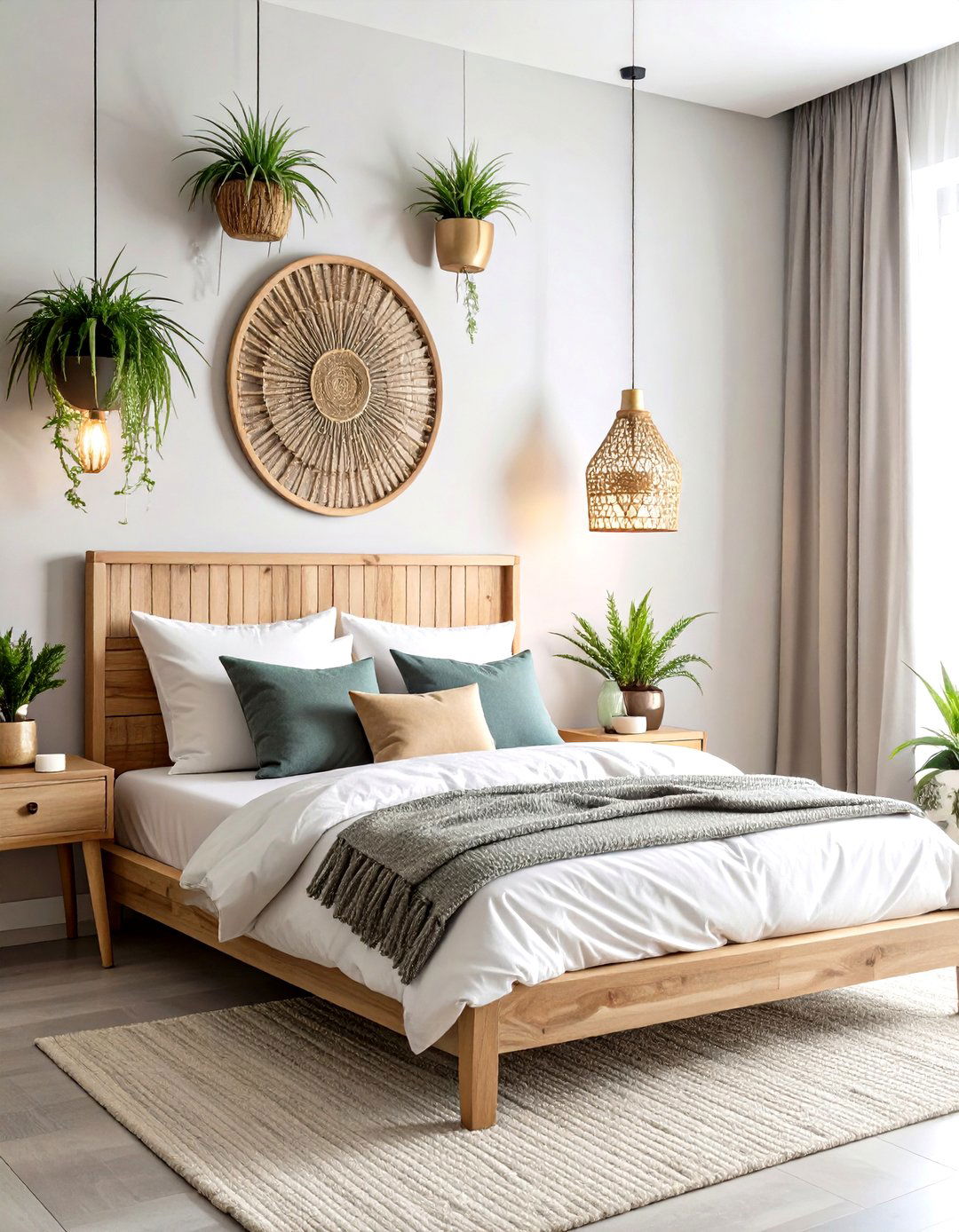
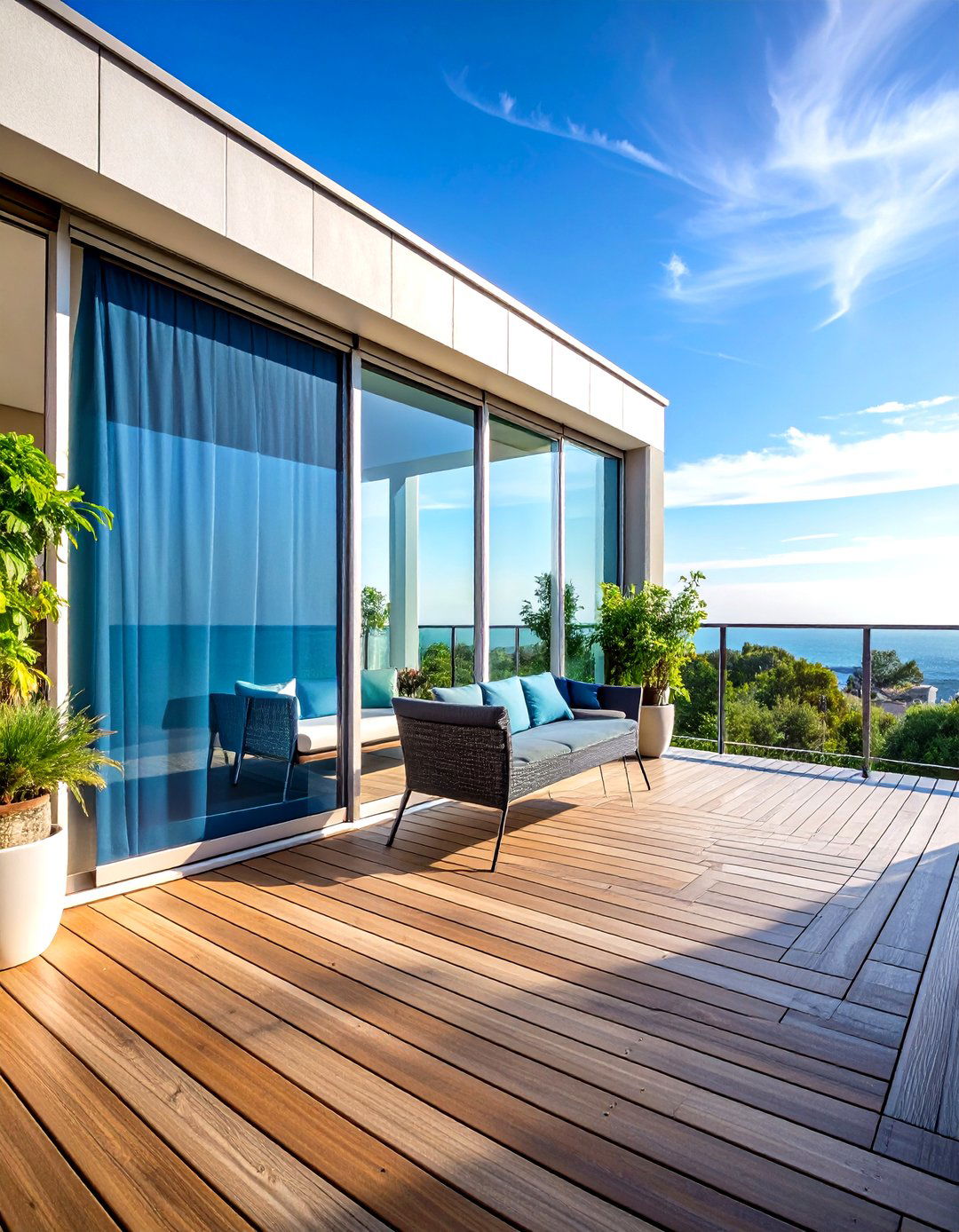
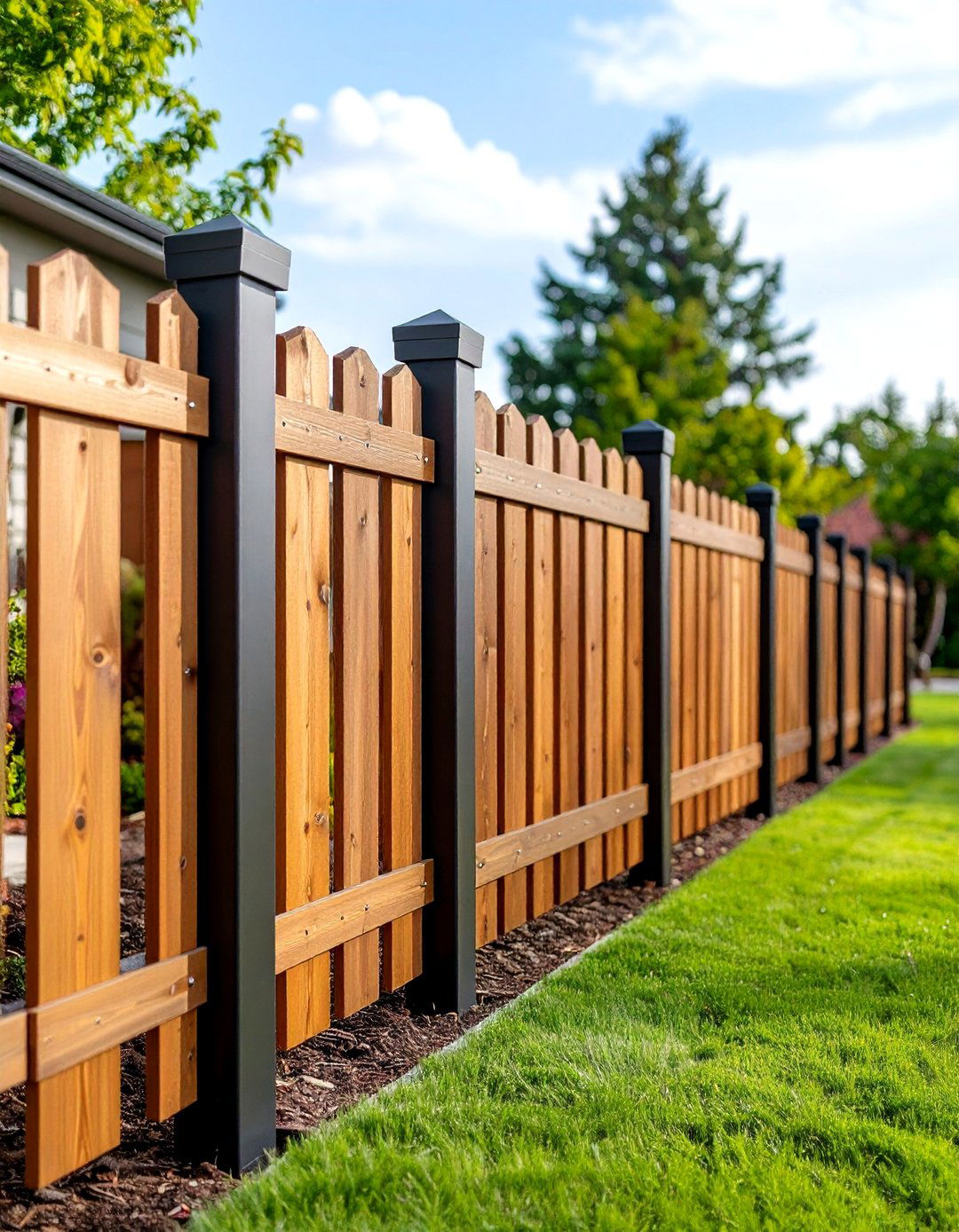
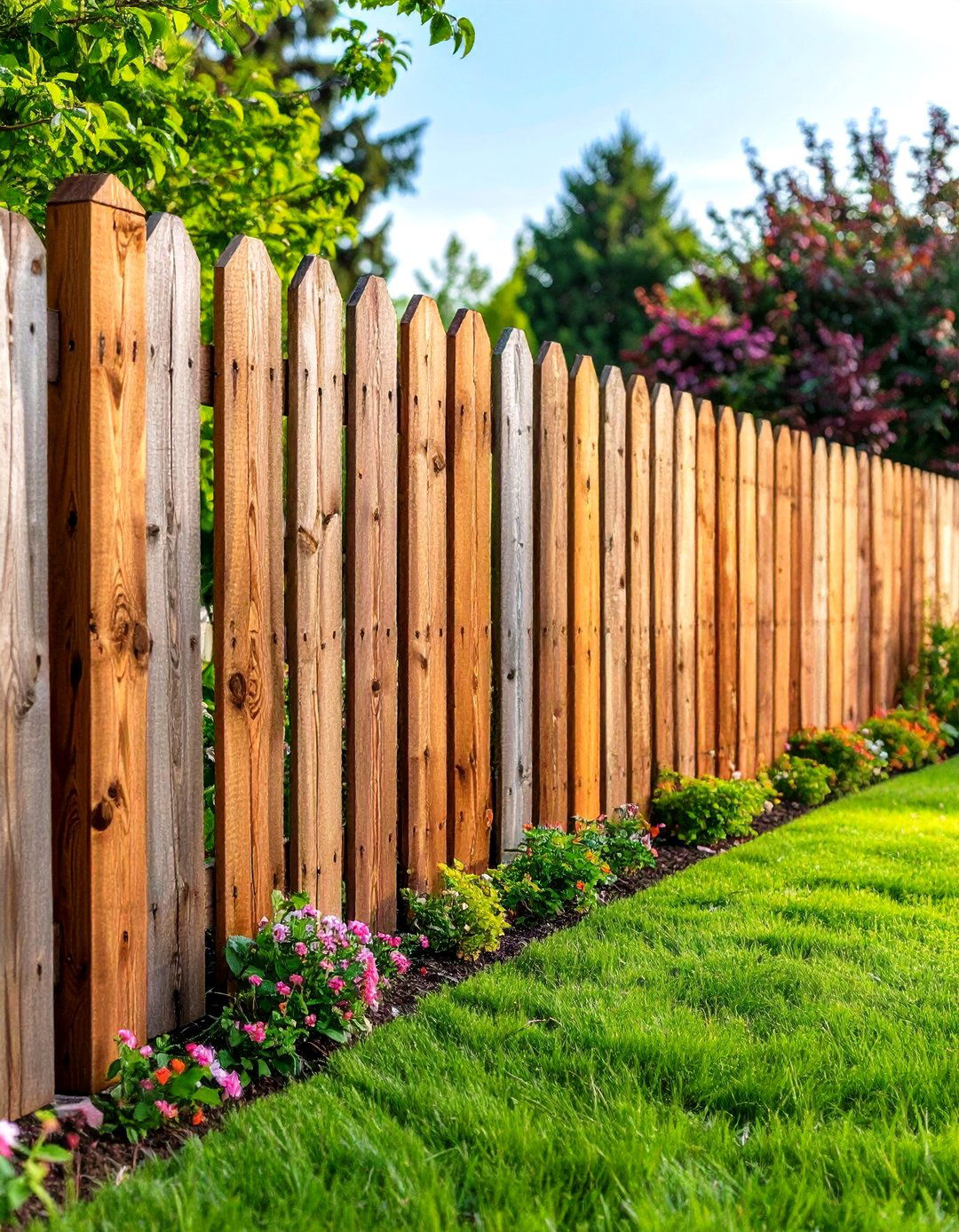
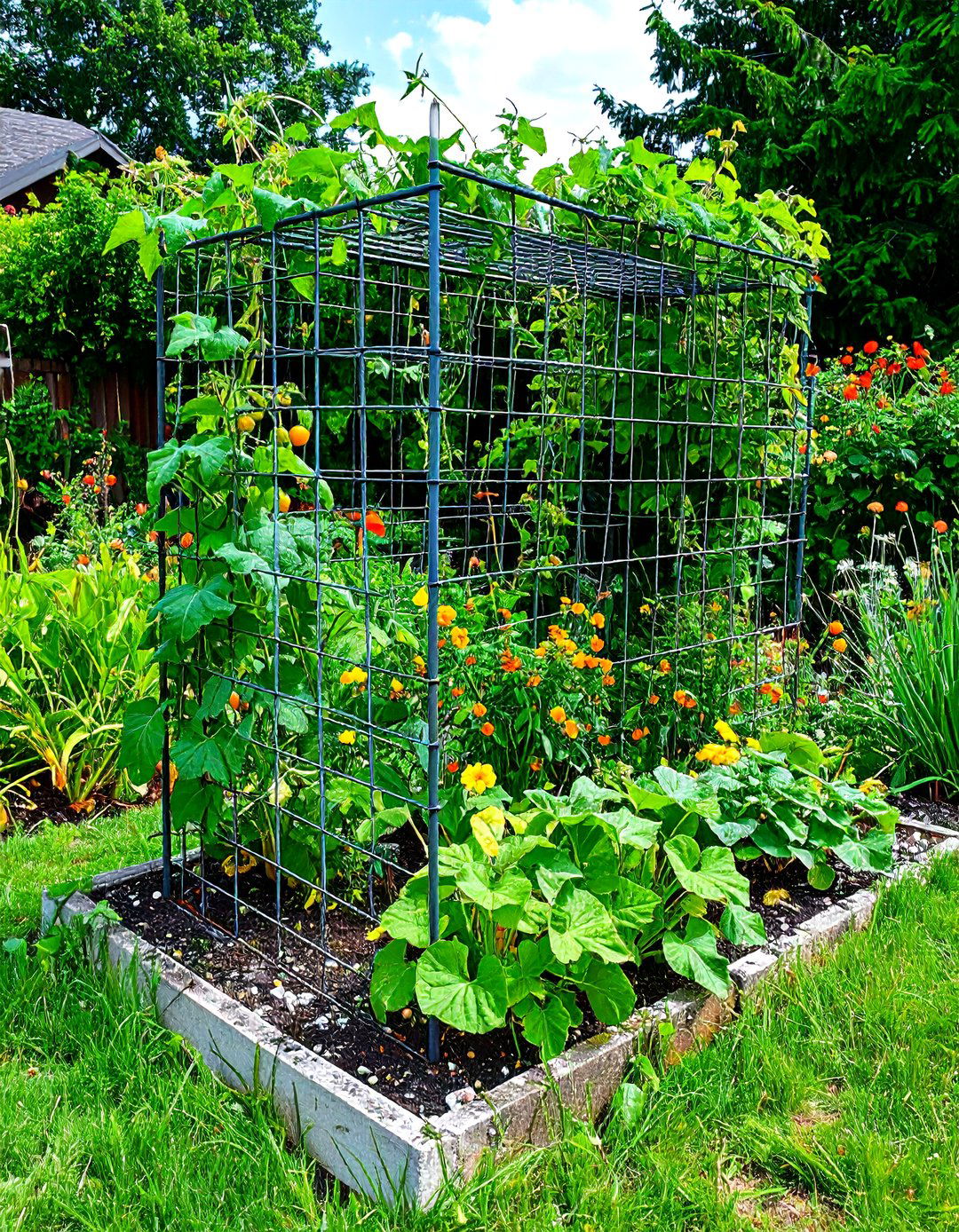
Leave a Reply